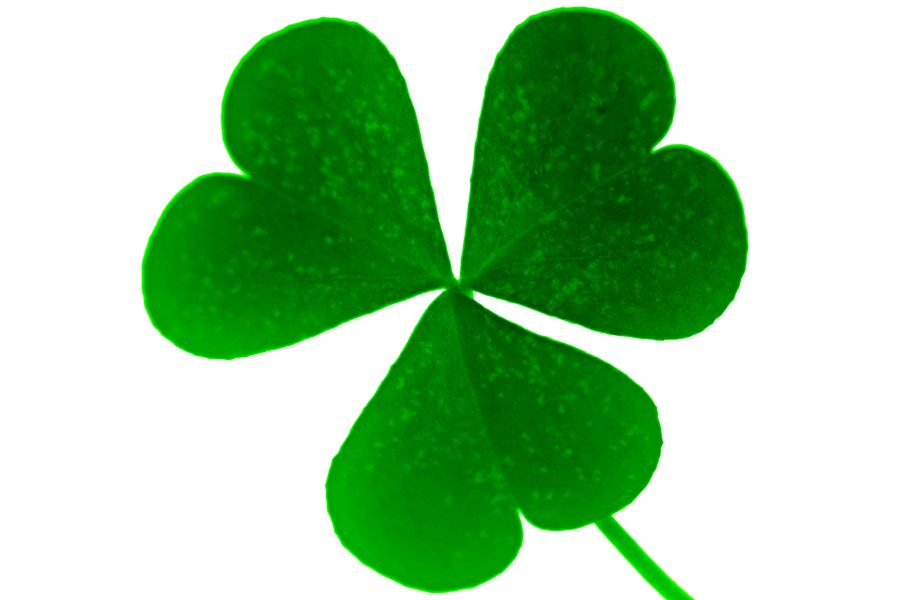Wisconsin’s woods and fields are full of plants you can eat if you know which ones to choose. Red raspberries, peppergrass, and milkweed are just a few that grow wild across the state. They show up in different seasons and offer a surprising range of flavors.
Foraging here is varied and can include flowers, pods, roots, and seeds. Edible plants appear in all kinds of forms, and each brings something different to the table. Whether sweet, bitter, or nutty, many have uses that go far beyond the obvious.
There’s always something new to discover once you start paying attention. Wisconsin’s edible plants go way beyond the few you might already recognize. With the right skills, you can turn nearly every walk into a chance to gather a diverse range of wild foods.
What We Cover In This Article:
- The Edible Plants Found in the State
- Toxic Plants That Look Like Edible Plants
- How to Get the Best Results Foraging
- Where to Find Forageables in the State
- Peak Foraging Seasons
- The extensive local experience and understanding of our team
- Input from multiple local foragers and foraging groups
- The accessibility of the various locations
- Safety and potential hazards when collecting
- Private and public locations
- A desire to include locations for both experienced foragers and those who are just starting out
Using these weights we think we’ve put together the best list out there for just about any forager to be successful!
A Quick Reminder
Before we get into the specifics about where and how to find these plants and mushrooms, we want to be clear that before ingesting any wild plant or mushroom, it should be identified with 100% certainty as edible by someone qualified and experienced in mushroom and plant identification, such as a professional mycologist or an expert forager. Misidentification can lead to serious illness or death.
All plants and mushrooms have the potential to cause severe adverse reactions in certain individuals, even death. If you are consuming wild foragables, it is crucial to cook them thoroughly and properly and only eat a small portion to test for personal tolerance. Some people may have allergies or sensitivities to specific mushrooms and plants, even if they are considered safe for others.
The information provided in this article is for general informational and educational purposes only. Foraging involves inherent risks.
The Edible Plants Found in the State
Wild plants found across the state can add fresh, seasonal ingredients to your meals:
Red Currant (Ribes rubrum)
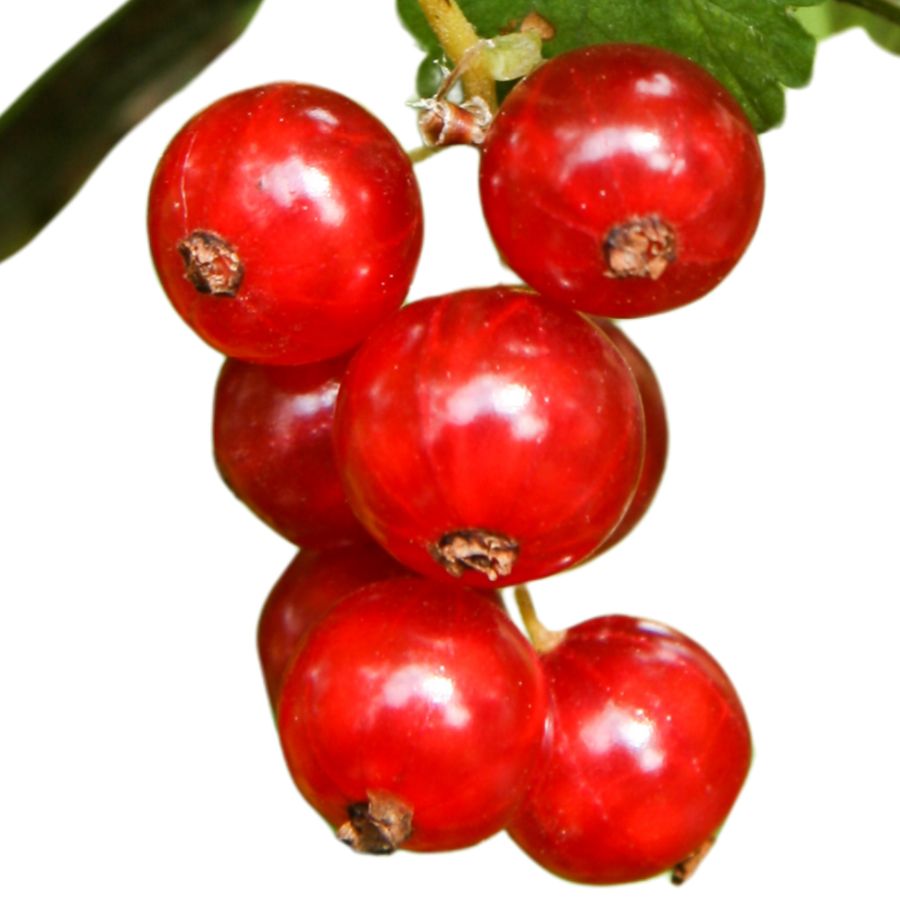
These bright, translucent berries of red currant grow in dangling clusters and have a tart, juicy bite that works well in jams, jellies, and syrups. You can eat them raw, but most people cook them down with sugar to mellow their sharpness.
The leaves are palmately lobed and resemble those of some wild gooseberries, though red currant lacks the thorns that many gooseberries have. Its smooth-skinned fruits are also different from the spiny or hairy berries found on some lookalikes.
Only the ripe berries are edible—avoid any green or unripe ones, as they can cause stomach upset. The seeds are small and edible, blending easily into preserves or baked goods.
Its tartness pairs well with meats in sauces or glazes, and its juice adds color and tang to beverages. Some traditional recipes even use it to make wine or vinegar infusions.
Stinging Nettle (Urtica dioica)
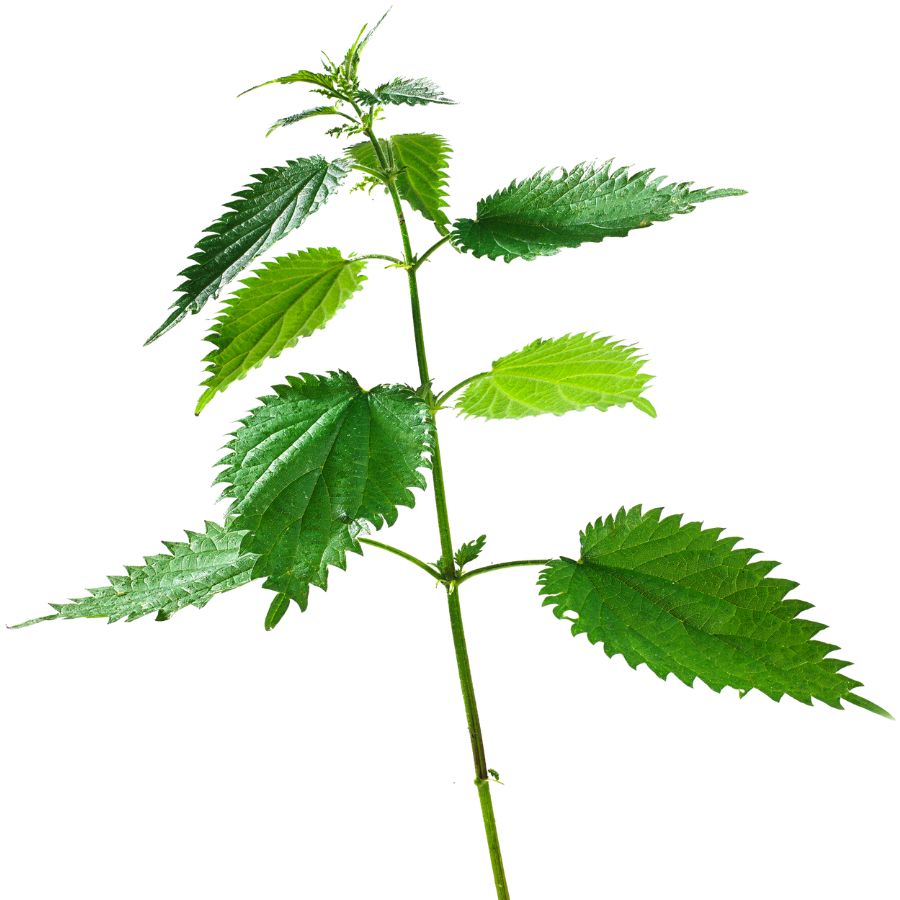
Stinging nettle is also known as burn weed or devil leaf, and it definitely earns those names. The tiny hairs on its leaves and stems can leave a painful, tingling rash if you brush against it raw, so always wear gloves when handling it.
Once it’s cooked or dried, those stingers lose their punch, and the leaves turn mild and slightly earthy in flavor. The texture softens too, making it a solid substitute for spinach in soups, pastas, or even as a simple sauté.
The young leaves and tender tops are what you want to collect. Avoid the tough lower stems and older leaves, which can be gritty or unpleasant to chew.
Some people confuse stinging nettle with purple deadnettle or henbit, but those don’t sting and have more rounded, fuzzy leaves. If the plant doesn’t make your skin react, it’s not stinging nettle.
Jerusalem Artichoke (Helianthus tuberosus)
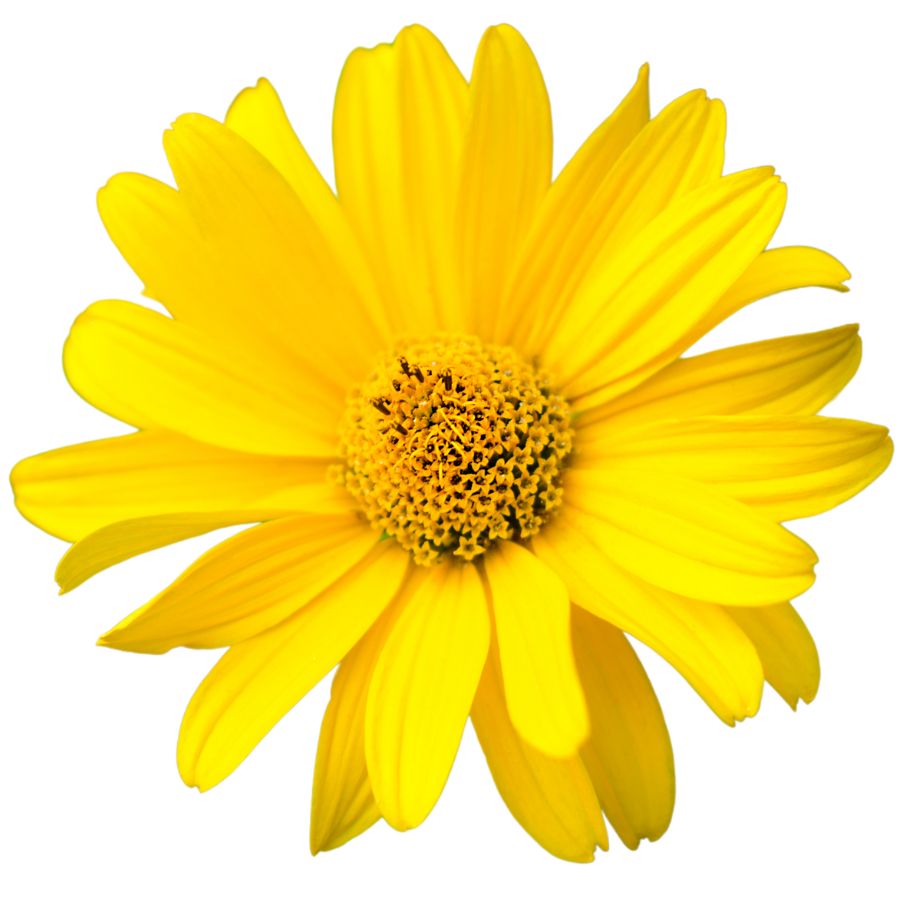
Jerusalem artichoke grows tall with sunflower-like blooms and has knobby underground tubers. The tubers are tan or reddish and look a bit like ginger root, though they belong to the sunflower family.
The part you’re after is the tuber, which has a nutty, slightly sweet flavor and a crisp texture when raw. You can roast, sauté, boil, or mash them like potatoes, and they hold their shape well in soups and stir-fries.
Some people experience gas or bloating after eating sunchokes due to the inulin they contain, so it’s a good idea to try a small amount first. Cooking them thoroughly can help reduce the chances of digestive discomfort.
Sunchokes don’t have many dangerous lookalikes, but it’s important not to confuse the plant with other sunflower relatives that don’t produce tubers. The above-ground part resembles a small sunflower, but it’s the knotted, underground tubers that are worth digging up.
Lamb’s Quarters (Chenopodium album)
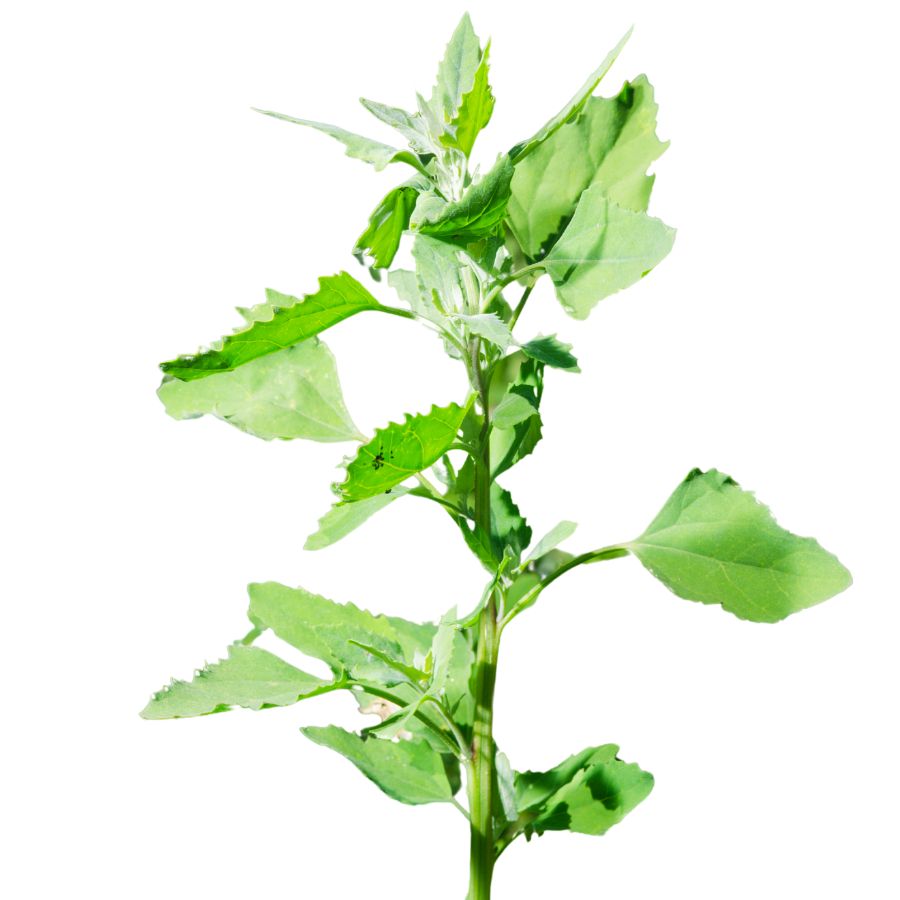
Lamb’s quarters, also called wild spinach and pigweed, has soft green leaves that often look dusted with a white, powdery coating. The leaves are shaped a little like goose feet, with slightly jagged edges and a smooth underside that feels almost velvety when you touch it.
A few plants can be confused with lamb’s quarters, like some types of nightshade, but true lamb’s quarters never have berries and its leaves are usually coated in that distinctive white bloom. Always check that the stems are grooved and not round and smooth like the poisonous lookalikes.
When you taste lamb’s quarters, you will notice it has a mild, slightly nutty flavor that gets richer when cooked. The young leaves, tender stems, and even the seeds are all edible, but you should avoid eating the older stems because they become tough and stringy.
People often sauté lamb’s quarters like spinach, blend it into smoothies, or dry the leaves for later use in soups and stews. It is also rich in oxalates, so you will want to cook it before eating large amounts to avoid any problems.
Sheep Sorrel (Rumex acetosella)
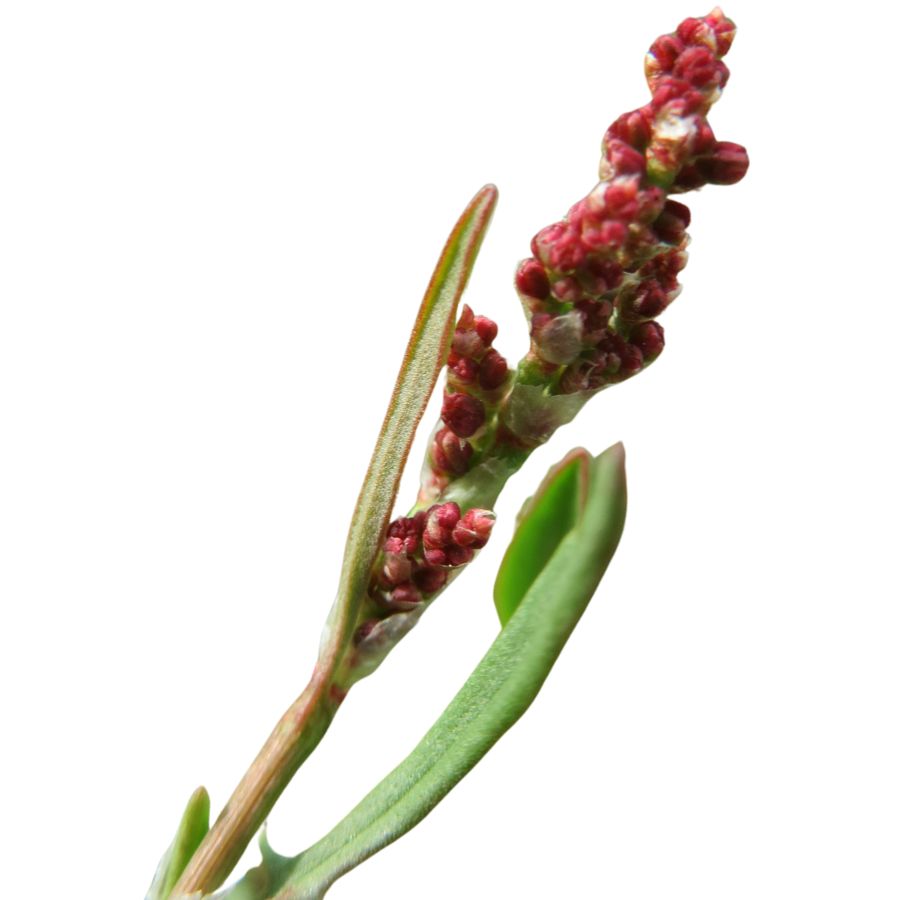
Sheep sorrel has narrow, arrow-shaped leaves with two small lobes at the base and a sharp, lemony flavor that hits immediately when you chew it. You can eat the leaves raw, toss them into soups, or blend them into sauces where their tang brightens up heavy dishes.
The leaves are soft and tender, and the stems are edible too, though they’re a bit more fibrous. Avoid confusing it with related docks like curly dock—those leaves are broader, tougher, and don’t have the same tart bite.
People mostly use sheep sorrel fresh, but it also dries well for tea or powdered seasoning. Its high oxalic acid content means you shouldn’t eat large amounts regularly, especially if you have kidney issues.
Red-tinted veins often run through the green leaves, especially in poor or acidic soils. The roots and flowers aren’t typically eaten, so stick with the leaves and young stems.
American Hazelnut (Corylus americana)
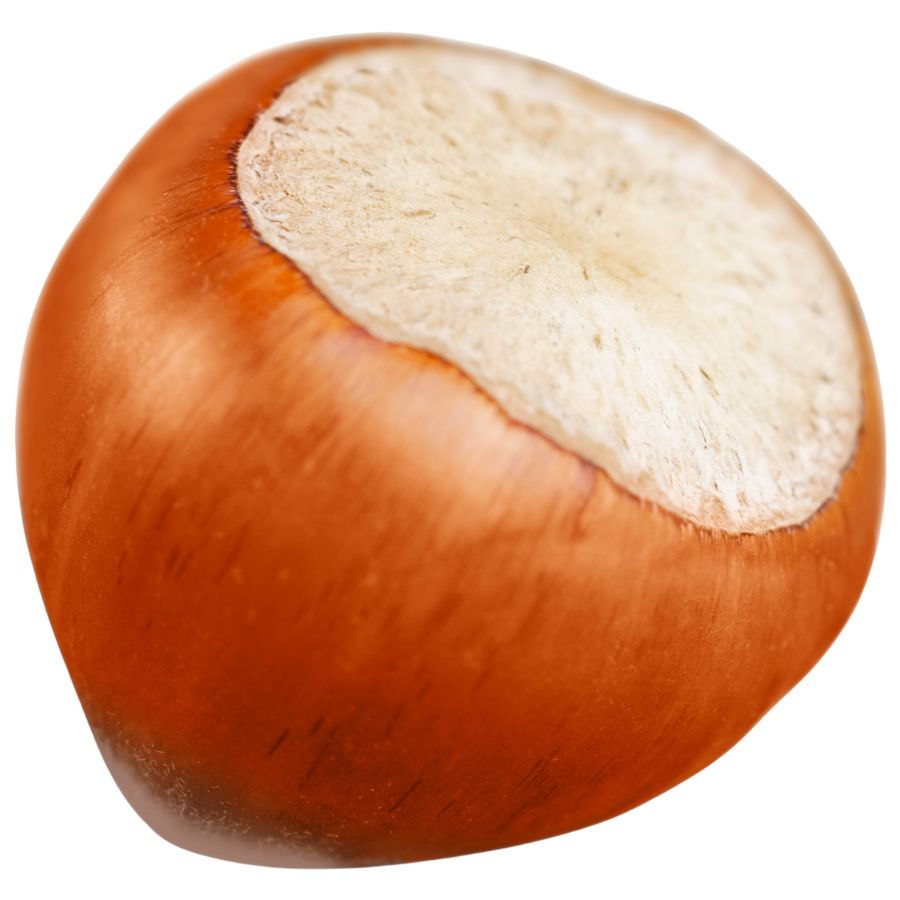
Clusters of round, fringed husks tucked among bushy green leaves usually mean you have found American hazelnut, sometimes called American filbert. It grows as a wide, shrubby plant that spreads along forest edges, open woods, and overgrown fields.
The nuts inside are rich and buttery, with a firm texture that turns creamy when roasted or ground into flour. You can eat them raw, toss them into baked goods, or crush them into a thick, flavorful spread.
It helps to know the difference between American hazelnut and its close cousin, beaked hazelnut, which hides its nut inside a long, pointed husk. Both plants are safe to eat, but the shape of the husk makes it easy to tell which one you have.
Only the inner nut is gathered for food; the leafy husk and hard outer shell are tossed aside. If you leave them too long, local wildlife like squirrels will clear out the patch faster than you can.
Common Evening Primrose (Oenothera biennis)
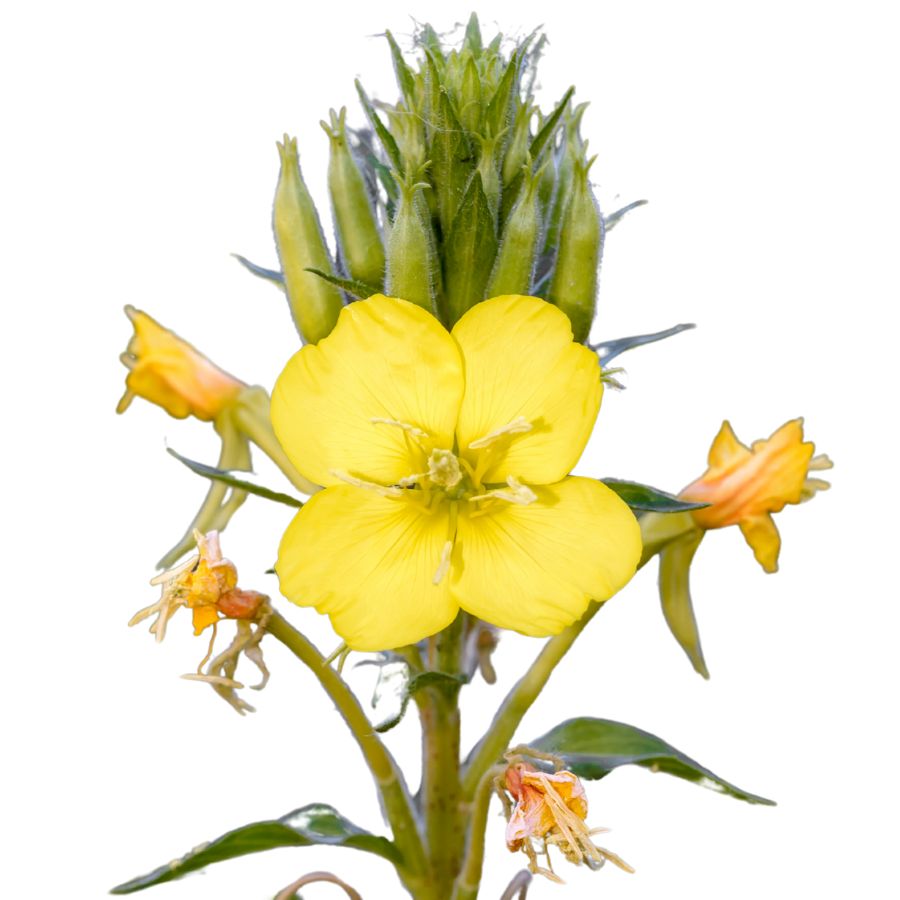
The bright yellow blooms of common evening primrose, or hog weed as it’s also called, only open in low light and tend to wilt by morning. It has a coarse stem and elongated leaves that spiral upward, with buds that cluster near the top.
Its root has a taste similar to salsify and works well roasted or baked. Flower buds and young leaves are sometimes boiled like spinach to reduce bitterness.
Some parts of the plant resemble helenium, which is not safe to eat—helenium leaves are narrower and more aromatic when crushed. The seeds of common evening primrose can be ground into a paste or flour-like mix for cooking.
Though many parts of the plant are used in food, the flower stalks get tough quickly and aren’t usually eaten. Stick with the first-year roots and early foliage for better flavor and texture.
Black Walnut (Juglans nigra)
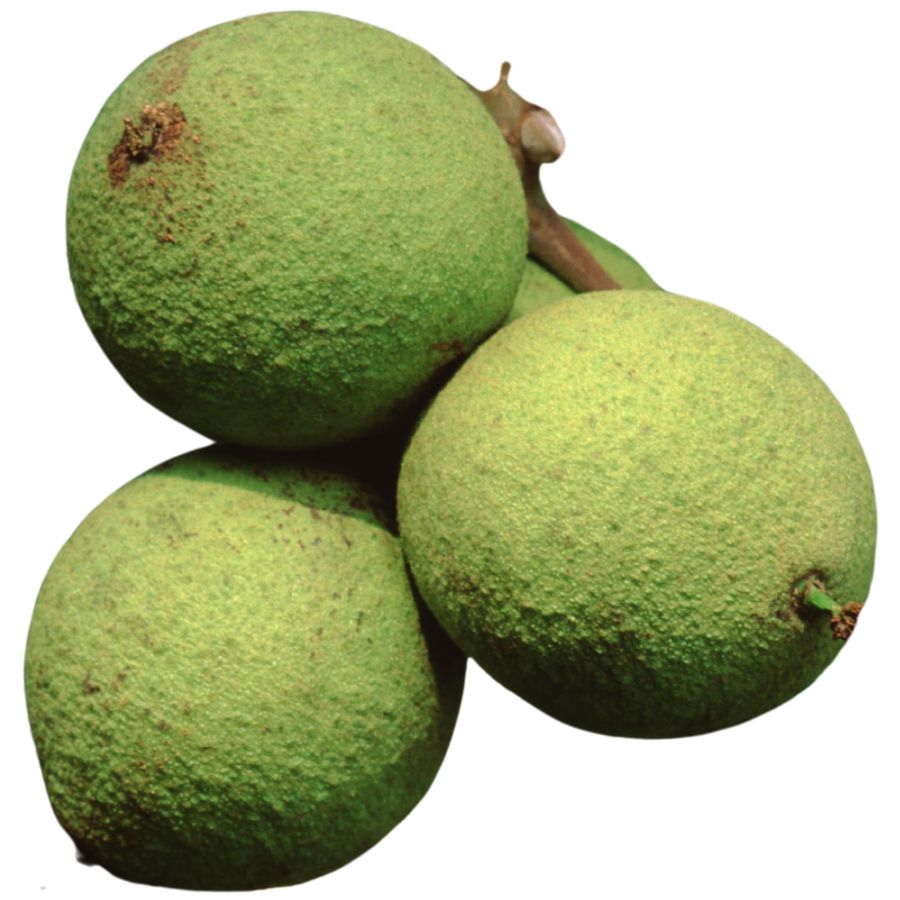
The nuts of the black walnut, sometimes called American walnut or eastern black walnut, have a tough outer husk and a deeply ridged shell inside. When you crack them open, you will find a rich, oily seed with an earthy, slightly bitter flavor that sets them apart from the sweeter English walnut.
It is easy to confuse black walnut with butternut, another tree with compound leaves and rough bark. If you check the nuts closely, black walnut fruits are round with a thick green husk, while butternuts are more oval and sticky.
When you get your hands on the nuts, the common ways to prepare them include baking them into cookies, sprinkling them over salads, or grinding them into a strong-tasting flour. The seeds themselves have a firm, almost chewy texture when raw and become crunchy after roasting.
Only the inner seed is eaten, while the outer husk and shell are discarded because they contain compounds that can irritate your skin. A fun fact about this plant is that even the roots and leaves produce a chemical called juglone, which can make it hard for other plants to grow nearby.
Dandelion (Taraxacum officinale)
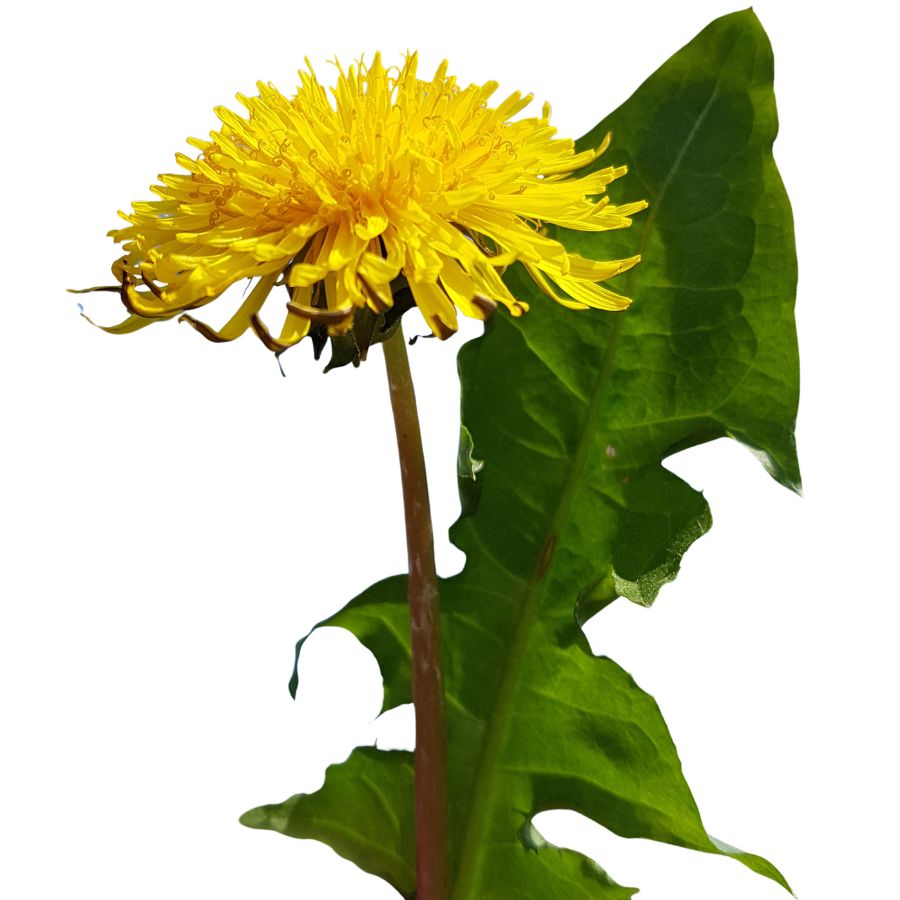
Bright yellow flowers and jagged, deeply toothed leaves make dandelions easy to spot in open fields, lawns, and roadsides. You might also hear them called lion’s tooth, blowball, or puffball once the flowers turn into round, white seed heads.
Every part of the dandelion is edible, but you will want to avoid harvesting from places treated with pesticides or roadside areas with heavy car traffic. Besides being a food source, dandelions have been used traditionally for simple herbal remedies and natural dye projects.
Young dandelion leaves have a slightly bitter, peppery flavor that works well in salads or sautés, and the flowers can be fried into fritters or brewed into tea. Some people even roast the roots to make a coffee substitute with a rich, earthy taste.
One thing to watch out for is cat’s ear, a common lookalike with hairy leaves and branching flower stems instead of a single, hollow one. To make sure you have a true dandelion, check for a smooth, hairless stem that oozes a milky sap when broken.
Staghorn Sumac (Rhus typhina)
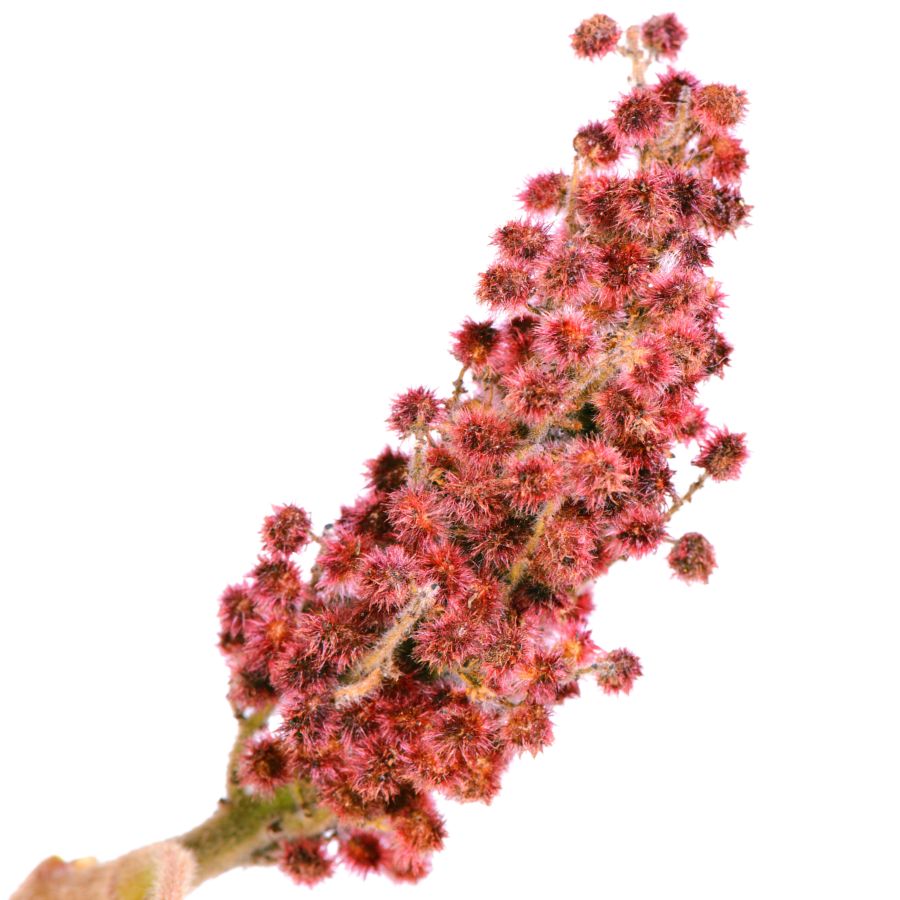
The edible part of staghorn sumac is the hairy, red fruit cluster that forms a cone shape at the tip of its branches. These clusters are packed with malic acid, giving them a tart flavor that’s perfect for making infused drinks.
Some people confuse it with poison sumac, but poison sumac has drooping white berries and lacks the fuzzy stems of staghorn sumac. That visual difference is critical when deciding what’s safe to forage.
After soaking the berry clusters in water, strain the result through a cloth or coffee filter to remove the irritating surface hairs. The liquid has a lemony bite that pairs well with honey or mint.
You can also dry the clusters and grind them into a reddish powder used like sumac spice in Middle Eastern dishes. Stick to the fruit only—none of the other parts are edible.
Red Clover (Trifolium pratense)
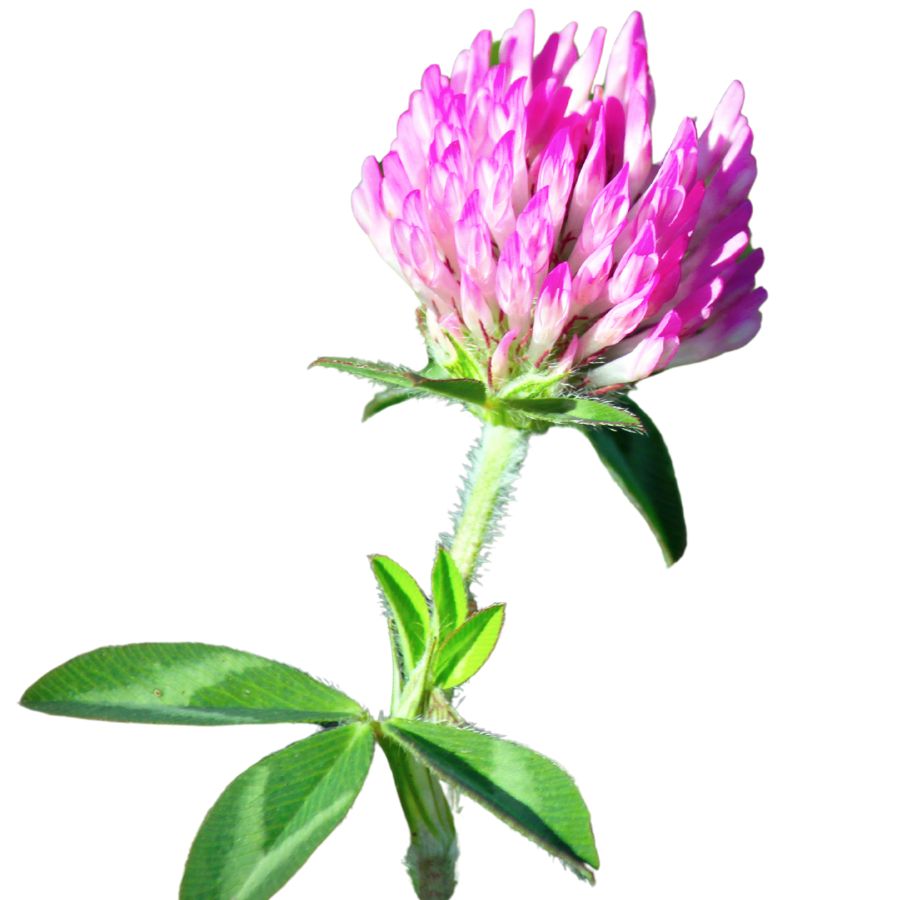
Red clover is also called wild clover or purple clover, and it grows in open areas with lots of sunlight. The round flower heads are a soft pinkish red, and the leaves have a pale crescent near the center.
The flower heads are the part most often gathered, and they can be eaten raw or dried for later use. Some people steep them in hot water for a mild, slightly sweet tea with a grassy flavor.
If you’re collecting flowers, make sure not to confuse them with crown vetch, which grows in similar spots but has more elongated, pea-like flowers. Crown vetch isn’t safe to eat, and it usually has a vine-like growth pattern that red clover doesn’t.
Red clover flowers can be tossed into salads or baked into muffins and breads for color and a hint of sweetness. The leaves are sometimes eaten too, but they tend to be tougher and more bitter.
Curly Dock (Rumex crispus)
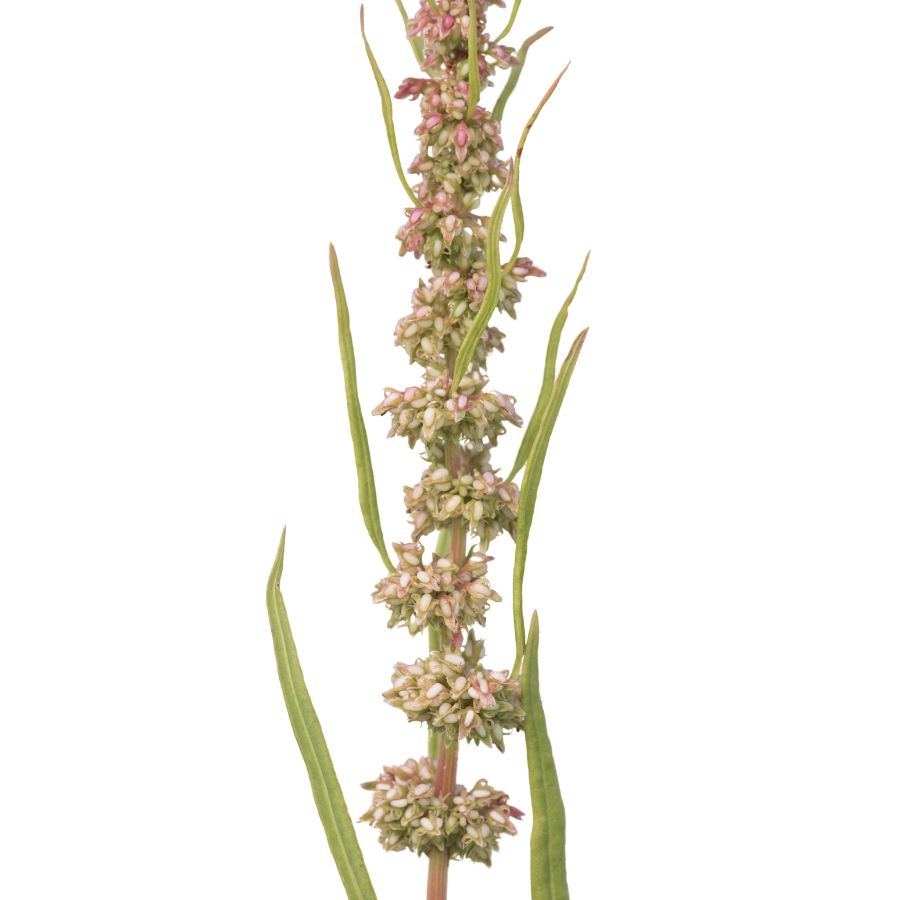
Curly dock, sometimes called yellow dock, is easy to spot once you know what to look for. It has long, wavy-edged leaves that form a rosette at the base, with tall stalks that eventually turn rusty brown as seeds mature.
The young leaves are edible and often cooked to mellow out their sharp, lemony taste, which can be too strong when eaten raw. You can also dry and powder the seeds to use as a flour supplement, although they are tiny and take some effort to prepare.
Curly dock has some lookalikes, like other types of dock and sorrel, but its heavily crinkled leaf edges and thick taproot help it stand out. Be careful not to confuse it with plants like wild rhubarb, which can have toxic parts if misidentified.
Besides being edible, curly dock has a history of being used in homemade remedies for skin irritation. The roots are not eaten raw because they are tough and contain compounds that can upset your stomach if you are not careful.
Wood Sorrel (Oxalis stricta)
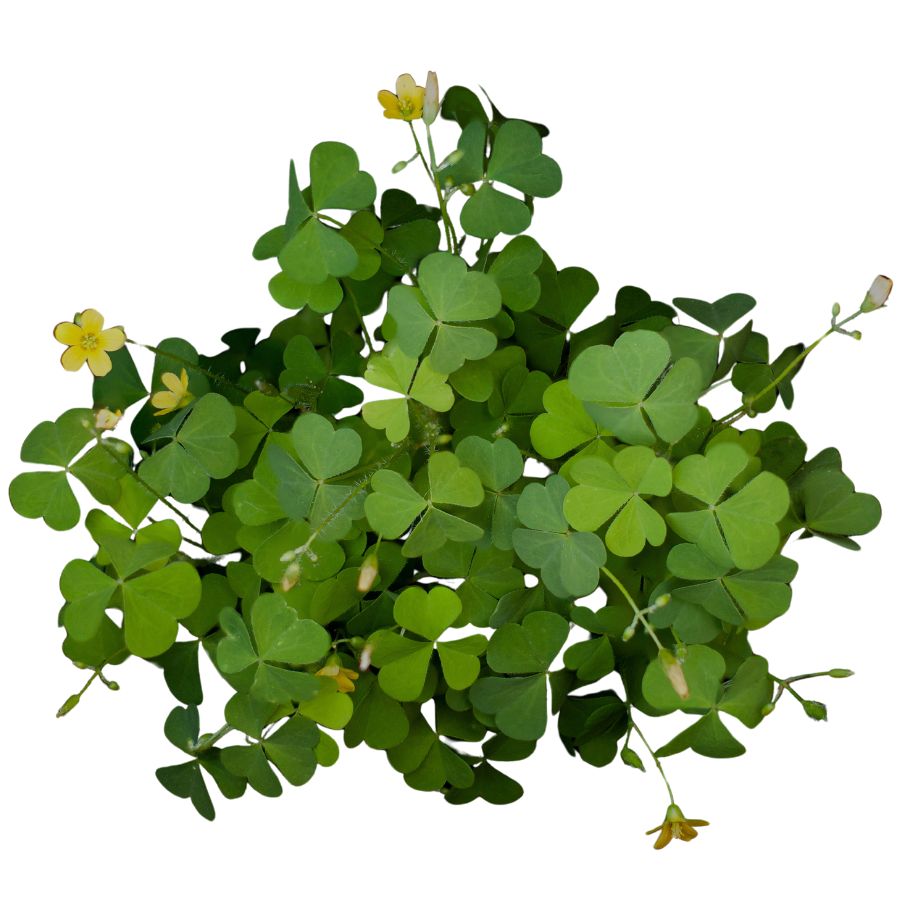
Wood sorrel has clover-like leaves and small yellow flowers. Each leaflet is heart-shaped, and the plant often folds up when touched or in low light.
The leaves, flowers, and seed pods are all safe to eat and have a tart, lemony flavor thanks to the oxalic acid they contain. You can toss them into salads, use them as a garnish, or nibble on them raw for a refreshing sour bite.
Be careful not to confuse it with clover, which has rounder leaves and lacks the same sharp tang when tasted. Large amounts of wood sorrel aren’t recommended if you have kidney issues, since oxalic acid can be hard on the kidneys over time.
The texture of the leaves is soft and delicate, making them a nice contrast in dishes with heavier greens. Even the seed pods have a bit of crunch and a pleasant tang if you catch them before they dry out.
Burdock (Arctium minus)
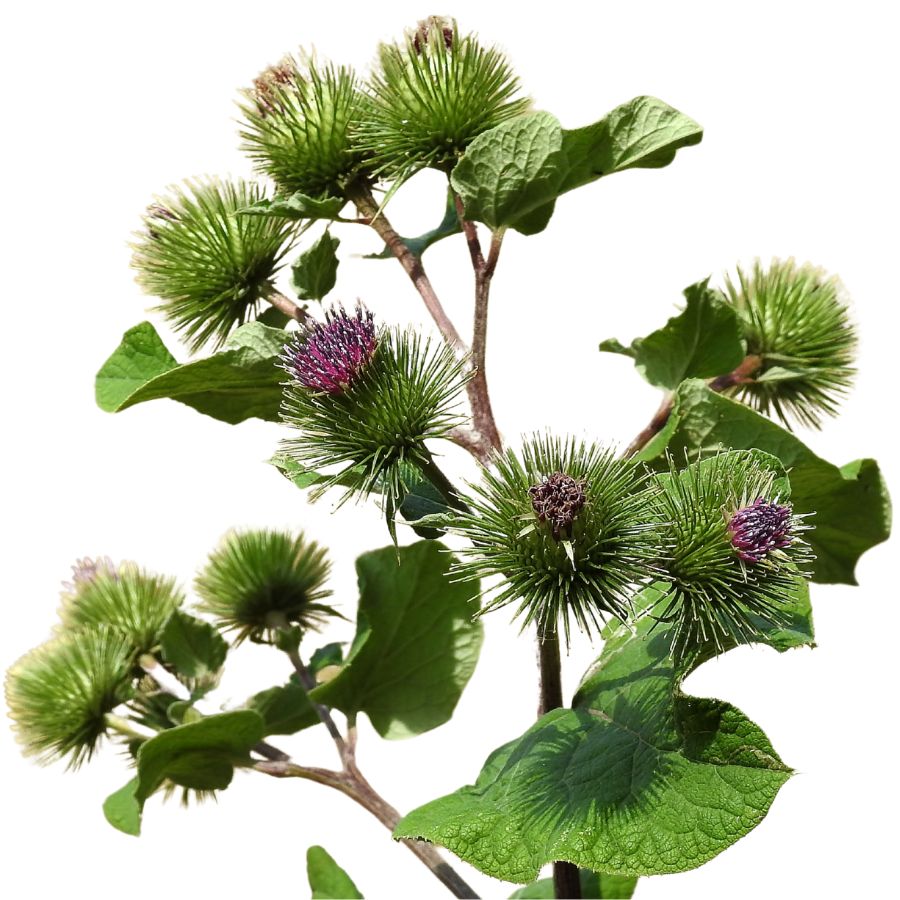
Burdock, also known as burrweed or beggar’s buttons, grows large, floppy leaves and produces clusters of sticky seed heads that cling to clothing and fur. The plant can easily tower over you once it matures, especially when the thick stalks shoot up.
The root is the main edible part and has a crisp texture with a mild, sweet, slightly earthy flavor when cooked. You should avoid eating the leaves or seed heads, as they tend to be unpleasantly bitter and tough even when young.
When you cook burdock root, it works well sliced thin and stir-fried, boiled into soups, or simmered with other vegetables to soak up savory flavors. Peeling the root before cooking can help soften the flavor and improve the texture.
It is important to watch out for lookalikes like foxglove and woolly mullein, which can grow similarly large leaves at the base. True burdock leaves have a whitish, fuzzy underside and strong, fibrous stems that are solid rather than hollow.
Wild Leek / Ramp (Allium tricoccum)
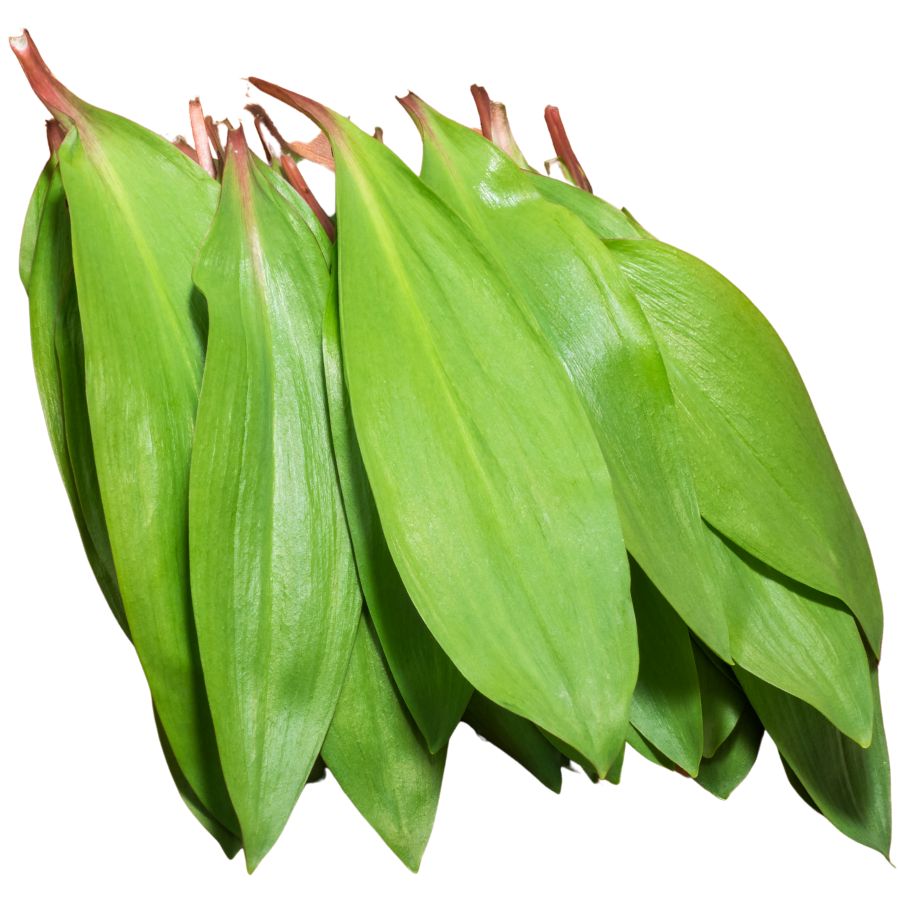
Known as wild leek, ramp, or ramson, this flavorful plant is famous for its broad green leaves and slender white stems. It grows low to the ground and gives off a strong onion-like scent when bruised, which can help you tell it apart from toxic lookalikes like lily of the valley.
If you give it a taste, you will notice a bold mix of onion and garlic flavors, with a tender texture that softens even more when cooked. People often sauté the leaves and stems, pickle the bulbs, or blend them into pestos and soups.
The entire plant can be used for cooking, but the leaves and bulbs are the most prized parts. It is important not to confuse it with similar-looking plants that do not have the signature onion smell when crushed.
Wild leek populations have declined in some areas because of overharvesting, so it is a good idea to only take a few from any given patch. When harvested thoughtfully, these vibrant greens can add a punch of flavor to just about anything you make.
Red Raspberry (Rubus idaeus)
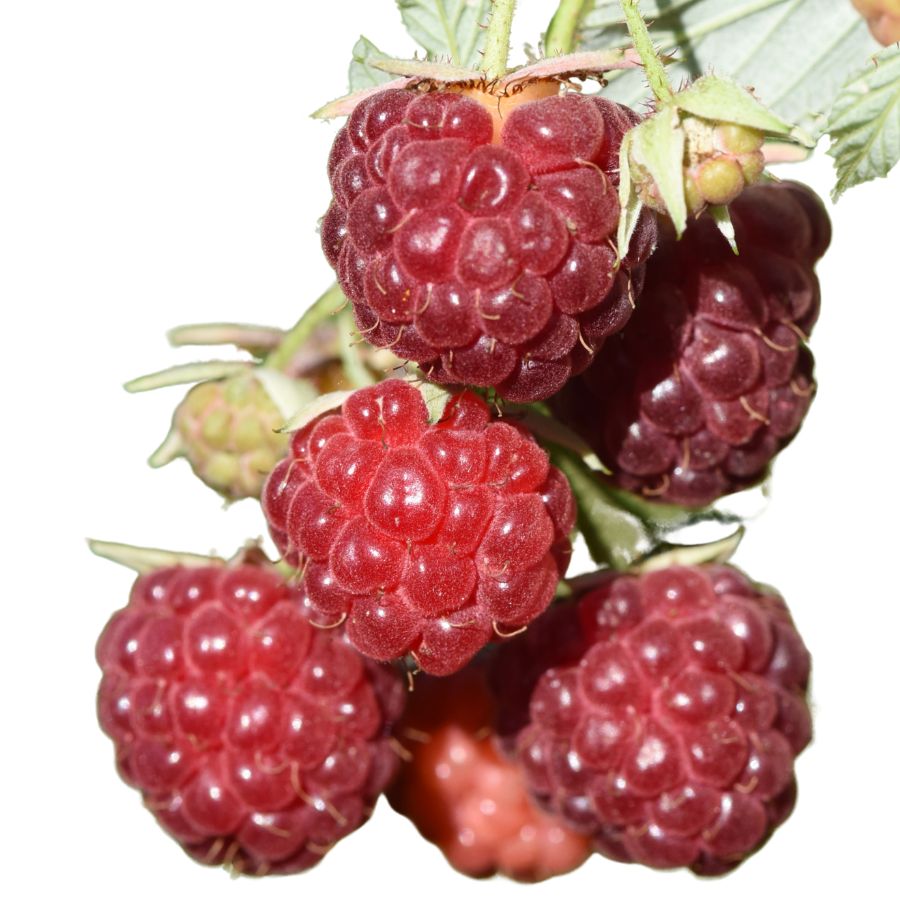
The red raspberry, also called wild raspberry or bramble raspberry, grows on prickly, arching canes with compound leaves and clusters of red drupelets. You’ll usually find them forming loose thickets, with berries that pull away cleanly from the core when ripe.
The fruit is sweet-tart and juicy with a soft, seedy texture, often used in jams, jellies, or baked into pies. Leaves and stems aren’t edible and shouldn’t be consumed.
While it looks a lot like wineberry or thimbleberry, red raspberry’s hollow core and matte, soft drupelets help separate it from those. Wineberries, in particular, have a shiny, sticky coating and red bristles on their stems.
Unwashed berries can sometimes host small insects or eggs, so rinse them thoroughly before eating or preserving. The fruit can also be frozen or dried for later use, though fresh is when it’s most flavorful.
Wild Plum (Prunus americana)
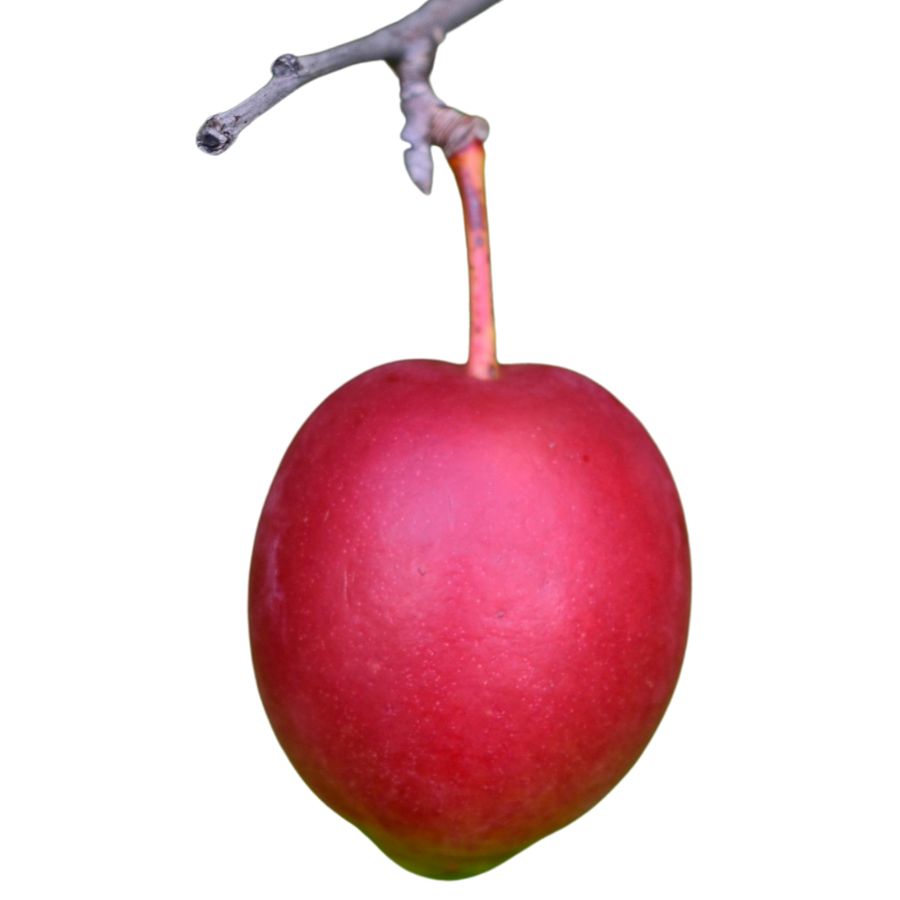
American plum, also called wild plum or river plum, produces small round fruits that range in color from yellow to deep red when ripe. The skin is slightly tart, but the flesh is soft, juicy, and sweet with a hint of spice.
You can eat the fruit raw or turn it into jellies, sauces, or wines—its natural pectin makes it ideal for preserves. Just avoid the seeds and leaves, which contain compounds that can release cyanide when crushed or chewed.
Its bark is rough and dark, and the branches often have short, sharp spines. The plant’s simple oval leaves and white spring flowers help distinguish it from less edible lookalikes like black cherry, which has longer, narrower leaves with a more bitter fruit.
If the fruit has a strong bitter almond smell when crushed, steer clear—it might be a different species altogether. American plum fruit clusters tend to be smaller and more tightly packed than those of cultivated varieties.
Groundnut (Apios americana)

Groundnut is also called potato bean or Indian potato, and it grows as a climbing vine with clusters of pinkish-purple flowers. The part most people go for is the underground tuber, which looks a bit like a small, knobby chain of beads.
The flavor is richer than a regular potato, with a nutty, earthy taste and a dense, almost chestnut-like texture when cooked. It holds up well in soups and stews, or you can boil and mash it like a root vegetable.
Some people slice it thin and roast it until crisp, while others slow-cook it to bring out a sweeter taste. The vine also produces beans, but the root is what’s usually eaten.
There are a few vines that resemble groundnut, but many of those don’t have the same distinctive flower clusters or tend to lack the beadlike roots. Always make sure you’re digging up the right plant before cooking it.
Black Raspberry (Rubus occidentalis)

Black raspberries grow on arching canes covered with small, hooked thorns. The berries start out red before ripening to a deep purplish-black color, and they have a hollow core when picked.
The fruit tastes sweet with a mild tartness, and the texture is juicy but slightly firmer than a red raspberry. People often use black raspberries for jams, pies, syrups, and even simple fruit leathers made at home.
Blackberry and wineberry are common lookalikes, which can confuse foragers at first glance. Black raspberry canes usually have a whitish coating and smaller thorns compared to the shinier, stouter canes of a blackberry.
You can eat the ripe fruit raw or cooked, but the leaves are sometimes brewed into teas after proper drying. It is best to avoid the green, unripe berries, as they are tough and lack the flavor that makes black raspberry such a favorite.
Milkweed (Asclepias syriaca)
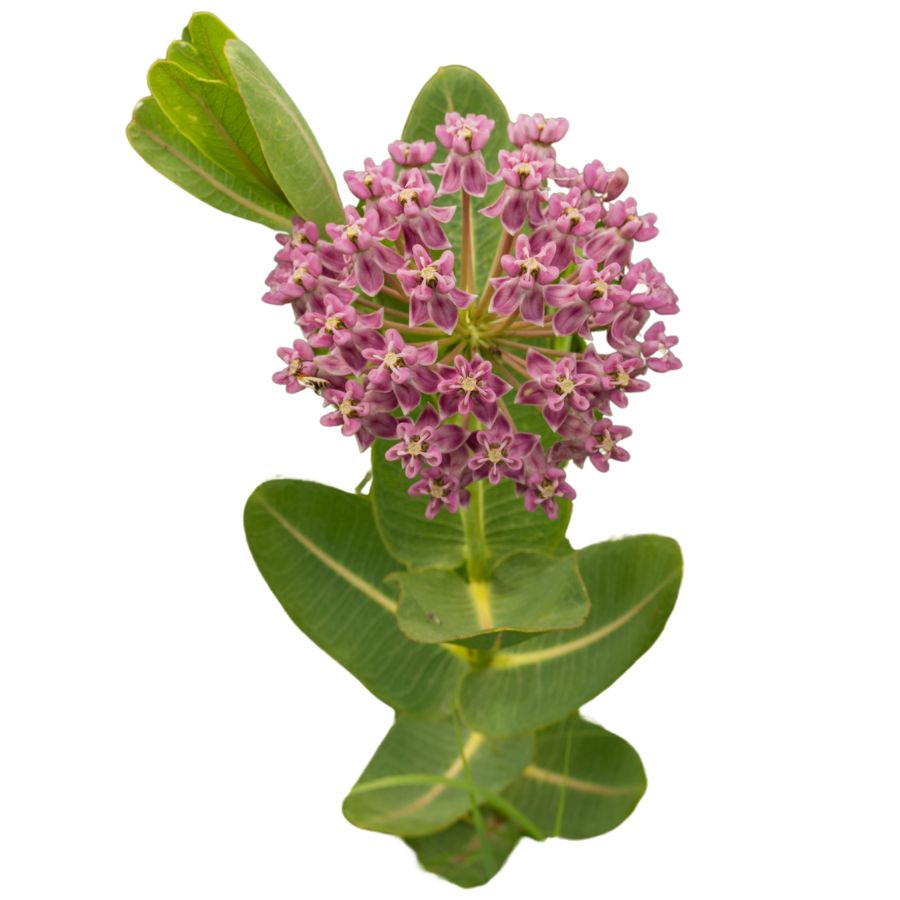
Known for its thick stems, broad leaves, and clusters of pinkish-purple flowers, common milkweed is sometimes called silkweed or butterfly flower. When you snap a stem or leaf, it releases a milky sap that helps you tell it apart from other plants that can be harmful.
If you want to try it in the kitchen, focus on gathering the young shoots, the tightly closed flower buds, and the small, immature pods. These parts have a mild, slightly sweet flavor when cooked, and their soft texture makes them a good addition to soups, sautés, and fritters.
Getting it ready to eat takes a little care, since boiling the plant parts in several changes of water helps remove bitterness and unwanted compounds. Some people also like to steam the buds or fry the pods lightly to bring out their best taste.
Although monarch caterpillars rely on this plant for survival, it has a long history of being used by people as well. Watch out for lookalikes like dogbane, though, since they share the same milky sap but are dangerously toxic if eaten.
Toxic Plants That Look Like Edible Plants
There are plenty of wild edibles to choose from, but some toxic native plants closely resemble them. Mistaking the wrong one can lead to severe illness or even death, so it’s important to know exactly what you’re picking.
Poison Hemlock (Conium maculatum)
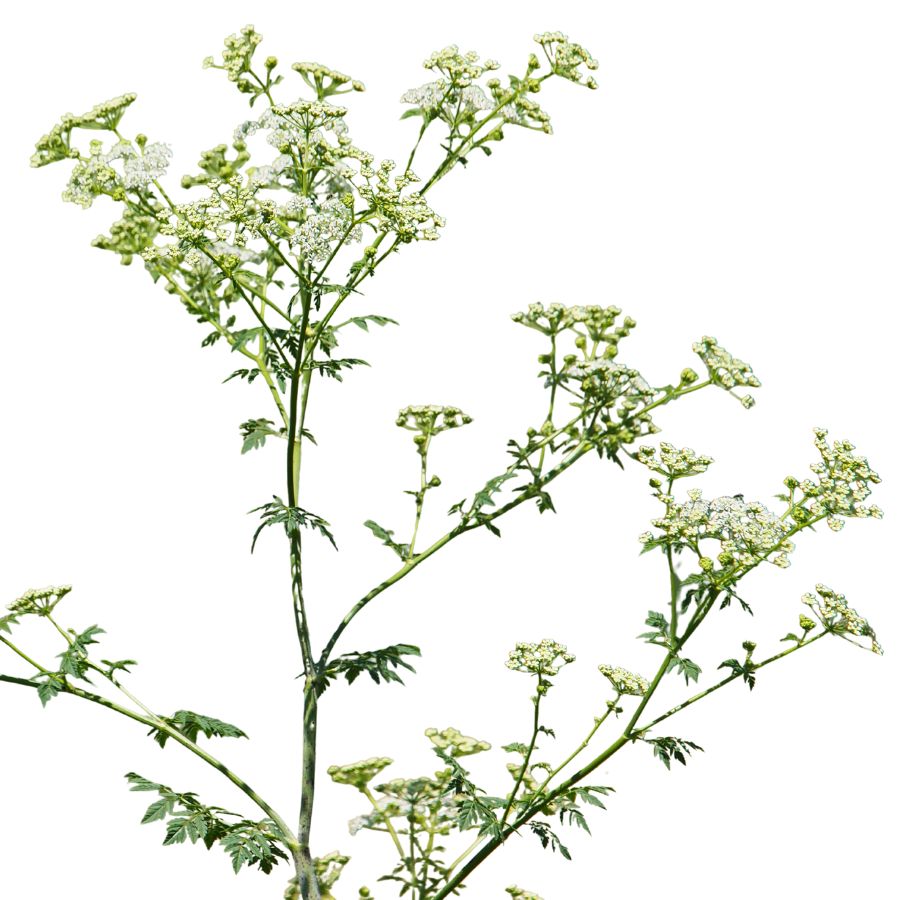
Often mistaken for: Wild carrot (Daucus carota)
Poison hemlock is a tall plant with lacy leaves and umbrella-like clusters of tiny white flowers. It has smooth, hollow stems with purple blotches and grows in sunny places like roadsides, meadows, and stream banks.
Unlike wild carrot, which has hairy stems and a dark central floret, poison hemlock has a musty odor and no flower center spot. It’s extremely toxic; just a small amount can be fatal, and even touching the sap can irritate the skin.
Water Hemlock (Cicuta spp.)
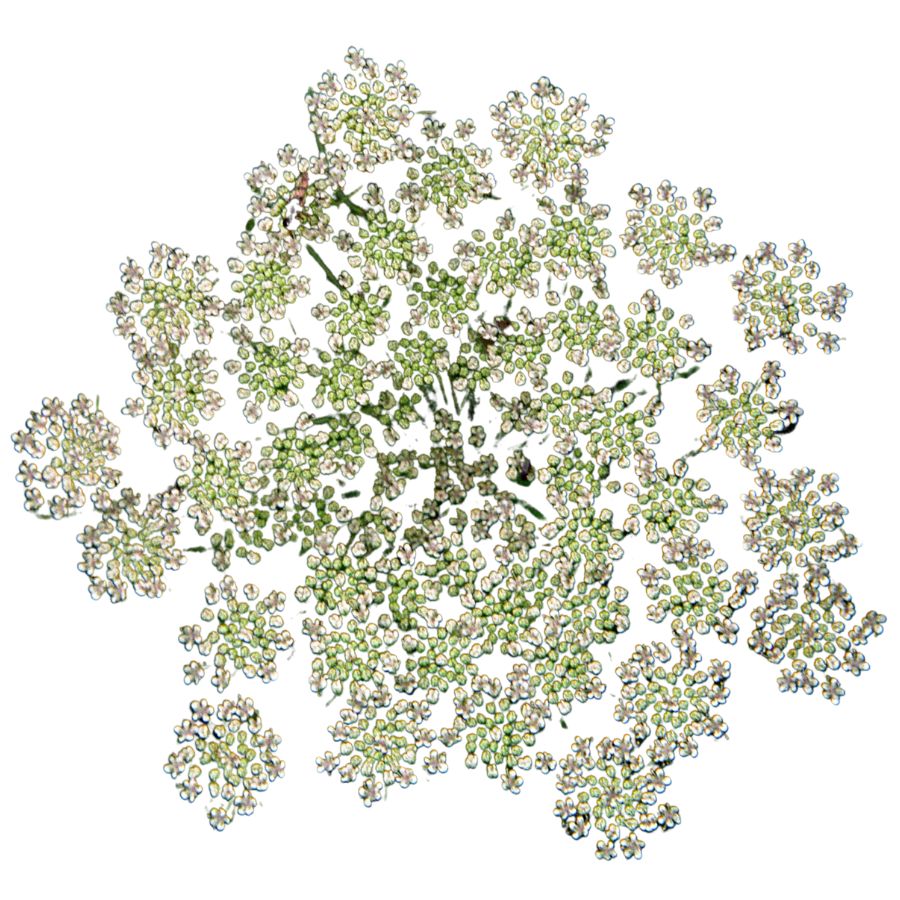
Often mistaken for: Wild parsnip (Pastinaca sativa) or wild celery (Apium spp.)
Water hemlock is a tall, branching plant with umbrella-shaped clusters of small white flowers. It grows in wet places like stream banks, marshes, and ditches, with stems that often show purple streaks or spots.
It can be confused with wild parsnip or wild celery, but its thick, hollow roots have internal chambers and release a yellow, foul-smelling sap when cut. Water hemlock is the most toxic plant in North America, and just a small amount can cause seizures, respiratory failure, and death.
False Hellebore (Veratrum viride)
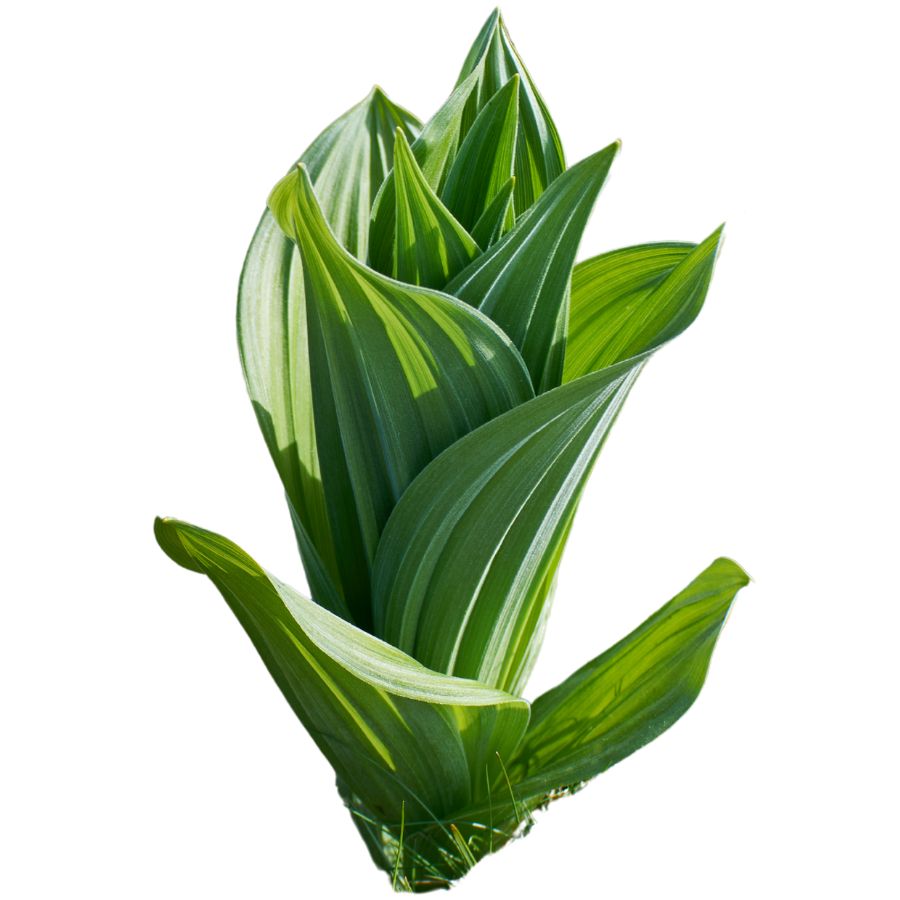
Often mistaken for: Ramps (Allium tricoccum)
False hellebore is a tall plant with broad, pleated green leaves that grow in a spiral from the base, often appearing early in spring. It grows in moist woods, meadows, and along streams.
It’s commonly mistaken for ramps, but ramps have a strong onion or garlic smell, while false hellebore is odorless and later grows a tall flower stalk. The plant is highly toxic, and eating any part can cause nausea, a slowed heart rate, and even death due to its alkaloids that affect the nervous and cardiovascular systems.
Death Camas (Zigadenus spp.)
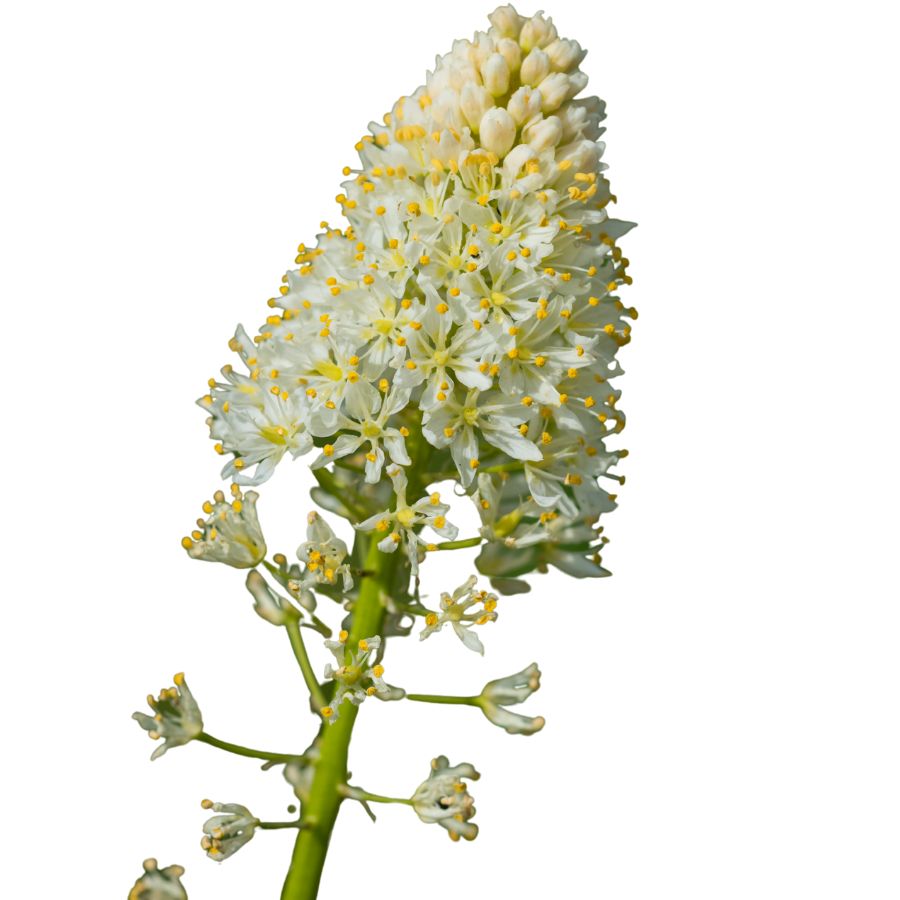
Often mistaken for: Wild onion or wild garlic (Allium spp.)
Death camas is a slender, grass-like plant that grows from underground bulbs and is found in open woods, meadows, and grassy hillsides. It has small, cream-colored flowers in loose clusters atop a tall stalk.
It’s often confused with wild onion or wild garlic due to their similar narrow leaves and habitats, but only Allium plants have a strong onion or garlic scent, while death camas has none. The plant is extremely poisonous, especially the bulbs, and even a small amount can cause nausea, vomiting, a slowed heartbeat, and potentially fatal respiratory failure.
Buckthorn Berries (Rhamnus spp.)
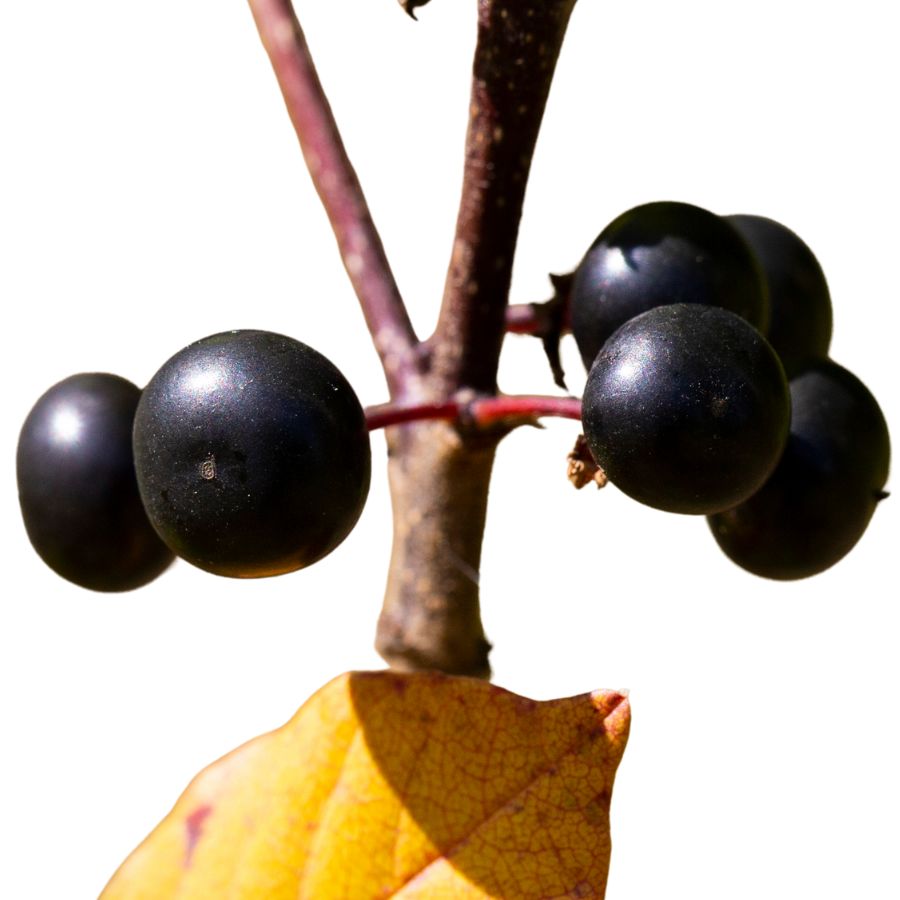
Often mistaken for: Elderberries (Sambucus spp.)
Buckthorn is a shrub or small tree often found along woodland edges, roadsides, and disturbed areas. It produces small, round berries that ripen to dark purple or black and usually grow in loose clusters.
These berries are sometimes mistaken for elderberries and other wild fruits, which also grow in dark clusters, but elderberries form flat-topped clusters on reddish stems while buckthorn berries are more scattered. Buckthorn berries are unsafe to eat as they contain compounds that can cause cramping, vomiting, and diarrhea, and large amounts may lead to dehydration and serious digestive problems.
Mayapple (Podophyllum peltatum)
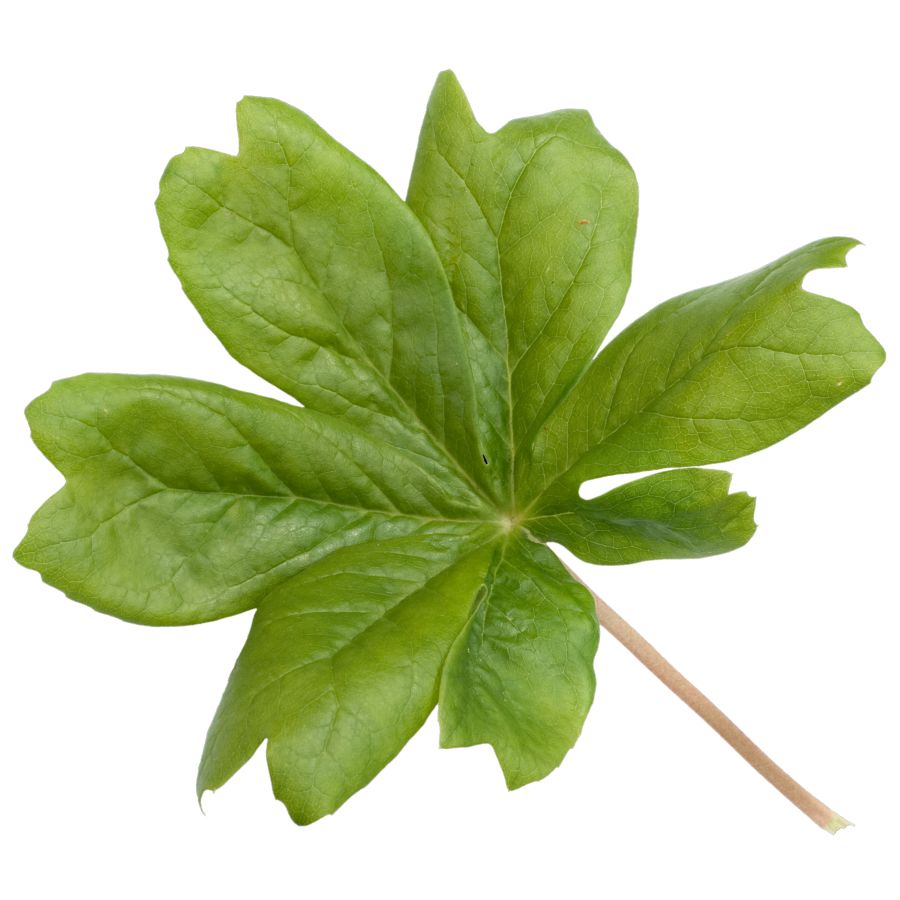
Often mistaken for: Wild grapes (Vitis spp.)
Mayapple is a low-growing plant found in shady forests and woodland clearings. It has large, umbrella-like leaves and produces a single pale fruit hidden beneath the foliage.
The unripe fruit resembles a small green grape, causing confusion with wild grapes, which grow in woody clusters on vines. All parts of the mayapple are toxic except the fully ripe, yellow fruit, which is only safe in small amounts. Eating unripe fruit or other parts can lead to nausea, vomiting, and severe dehydration.
Virginia Creeper (Parthenocissus quinquefolia)
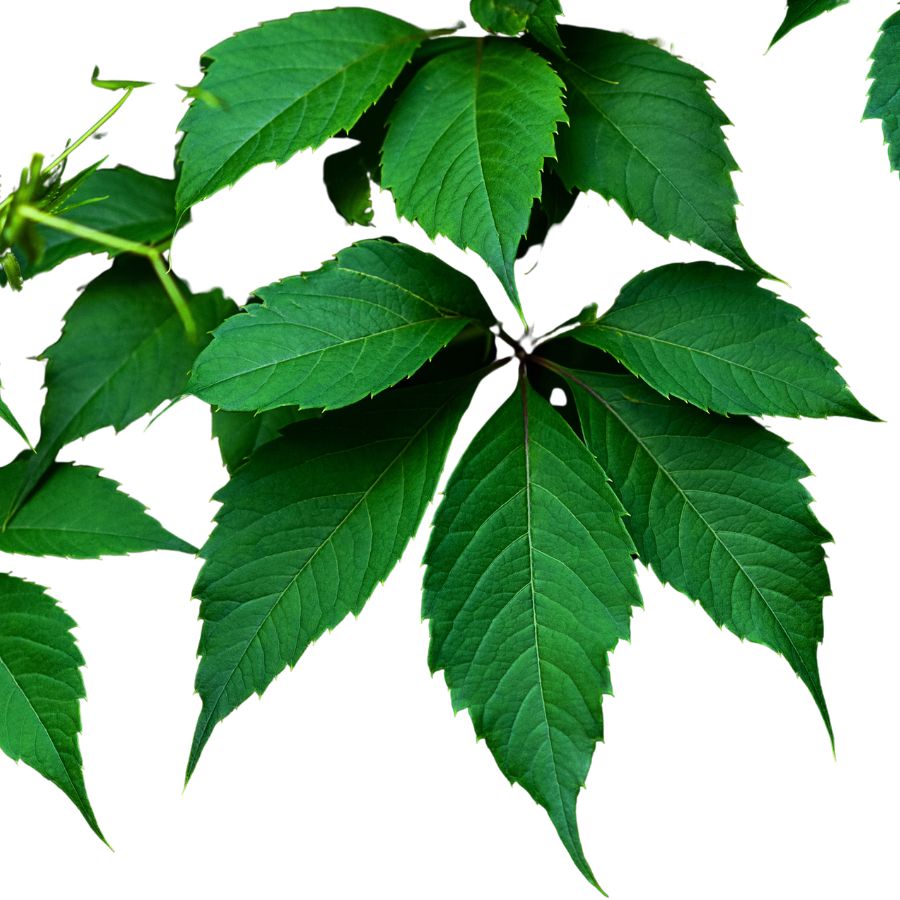
Often mistaken for: Wild grapes (Vitis spp.)
Virginia creeper is a fast-growing vine found on fences, trees, and forest edges. It has five leaflets per stem and produces small, bluish-purple berries from late summer to fall.
It’s often confused with wild grapes since both are climbing vines with similar berries, but grapevines have large, lobed single leaves and tighter fruit clusters. Virginia creeper’s berries are toxic to humans and contain oxalate crystals that can cause nausea, vomiting, and throat irritation.
Castor Bean (Ricinus communis)
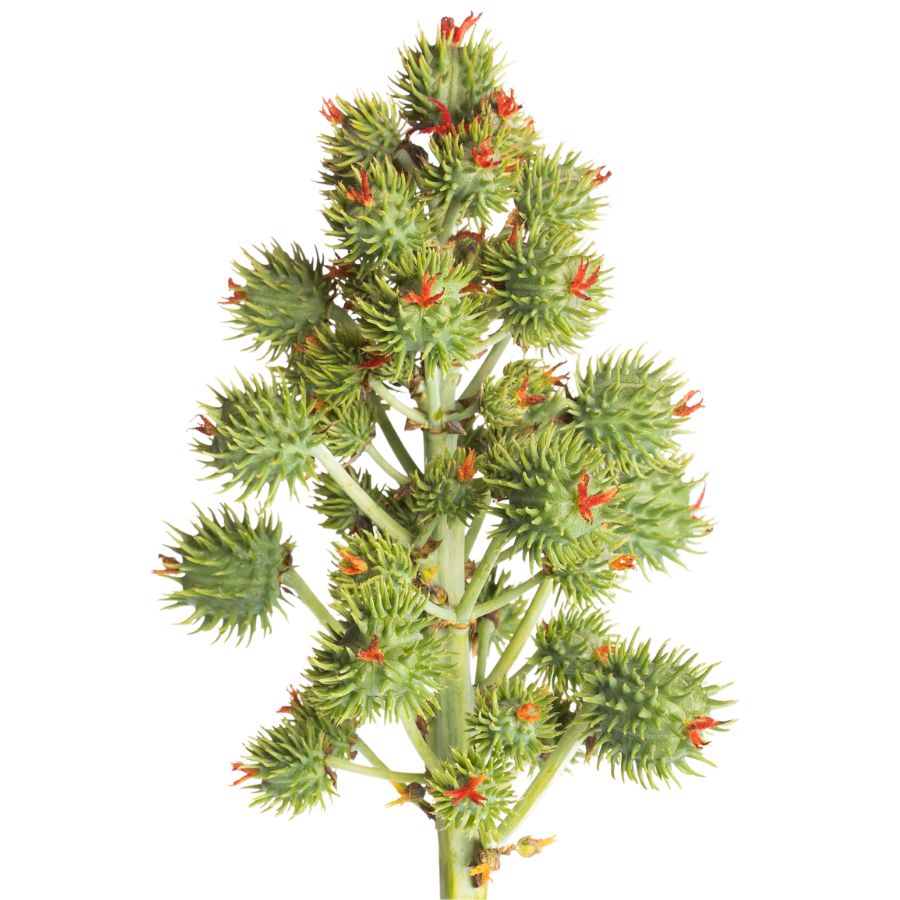
Often mistaken for: Wild rhubarb (Rumex spp. or Rheum spp.)
Castor bean is a bold plant with large, lobed leaves and tall red or green stalks, often found in gardens, along roadsides, and in disturbed areas in warmer regions in the US. Its red-tinged stems and overall size can resemble wild rhubarb to the untrained eye.
Unlike rhubarb, castor bean plants produce spiny seed pods containing glossy, mottled seeds that are extremely toxic. These seeds contain ricin, a deadly compound even in small amounts. While all parts of the plant are toxic, the seeds are especially dangerous and should never be handled or ingested.
A Quick Reminder
Before we get into the specifics about where and how to find these mushrooms, we want to be clear that before ingesting any wild mushroom, it should be identified with 100% certainty as edible by someone qualified and experienced in mushroom identification, such as a professional mycologist or an expert forager. Misidentification of mushrooms can lead to serious illness or death.
All mushrooms have the potential to cause severe adverse reactions in certain individuals, even death. If you are consuming mushrooms, it is crucial to cook them thoroughly and properly and only eat a small portion to test for personal tolerance. Some people may have allergies or sensitivities to specific mushrooms, even if they are considered safe for others.
The information provided in this article is for general informational and educational purposes only. Foraging for wild mushrooms involves inherent risks.
How to Get the Best Results Foraging
Safety should always come first when it comes to foraging. Whether you’re in a rural forest or a suburban greenbelt, knowing how to harvest wild foods properly is a key part of staying safe and respectful in the field.
Always Confirm Plant ID Before You Harvest Anything
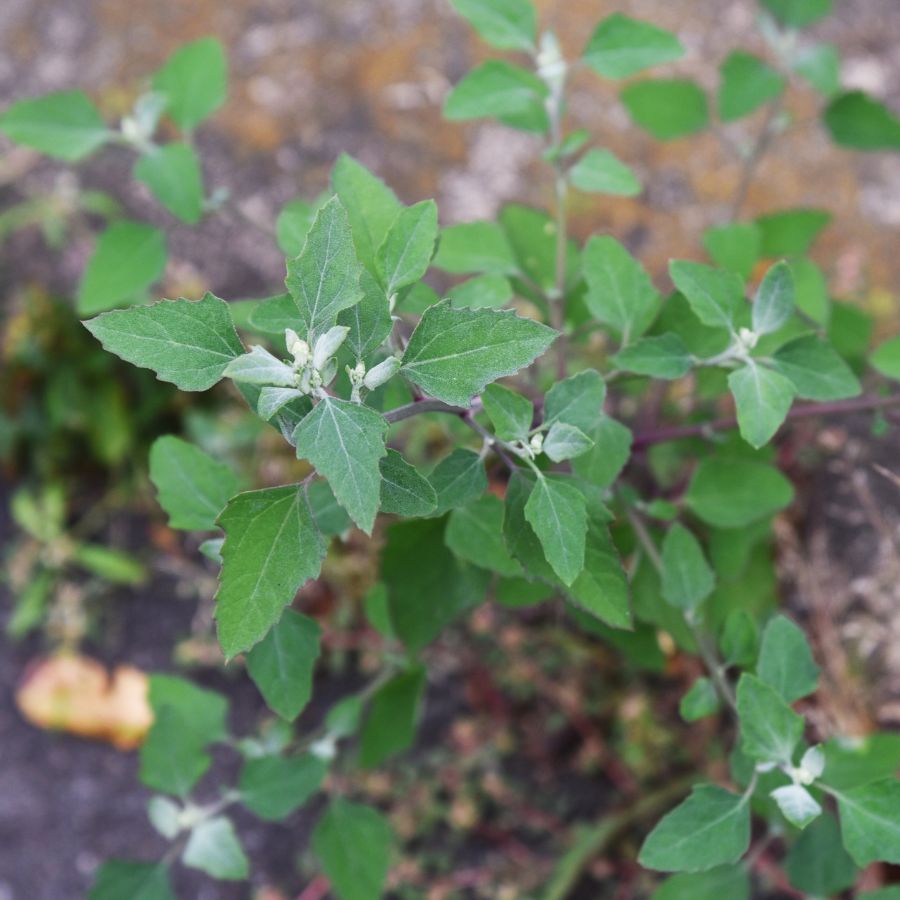
Knowing exactly what you’re picking is the most important part of safe foraging. Some edible plants have nearly identical toxic lookalikes, and a wrong guess can make you seriously sick.
Use more than one reliable source to confirm your ID, like field guides, apps, and trusted websites. Pay close attention to small details. Things like leaf shape, stem texture, and how the flowers or fruits are arranged all matter.
Not All Edible Plants Are Safe to Eat Whole
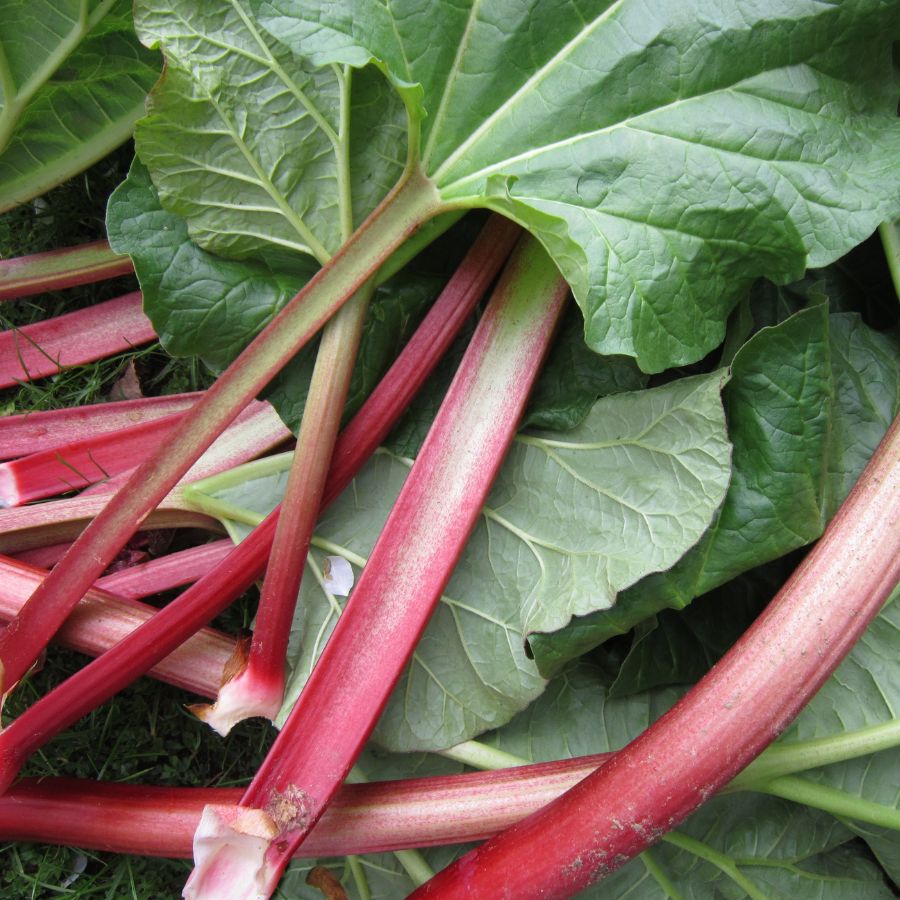
Just because a plant is edible doesn’t mean every part of it is safe. Some plants have leaves, stems, or seeds that can be toxic if eaten raw or prepared the wrong way.
For example, pokeweed is only safe when young and properly cooked, while elderberries need to be heated before eating. Rhubarb stems are fine, but the leaves are poisonous. Always look up which parts are edible and how they should be handled.
Avoid Foraging in Polluted or Contaminated Areas
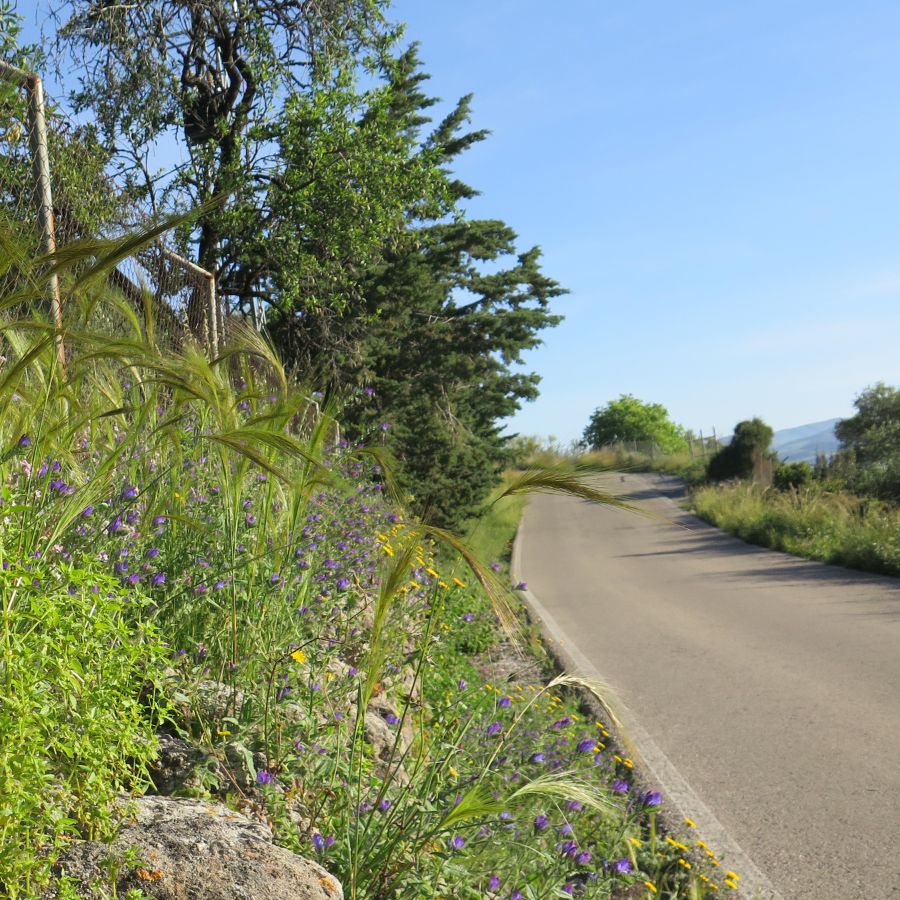
Where you forage matters just as much as what you pick. Plants growing near roads, buildings, or farmland might be coated in chemicals or growing in polluted soil.
Even safe plants can take in harmful substances from the air, water, or ground. Stick to clean, natural areas like forests, local parks that allow foraging, or your own yard when possible.
Don’t Harvest More Than What You Need
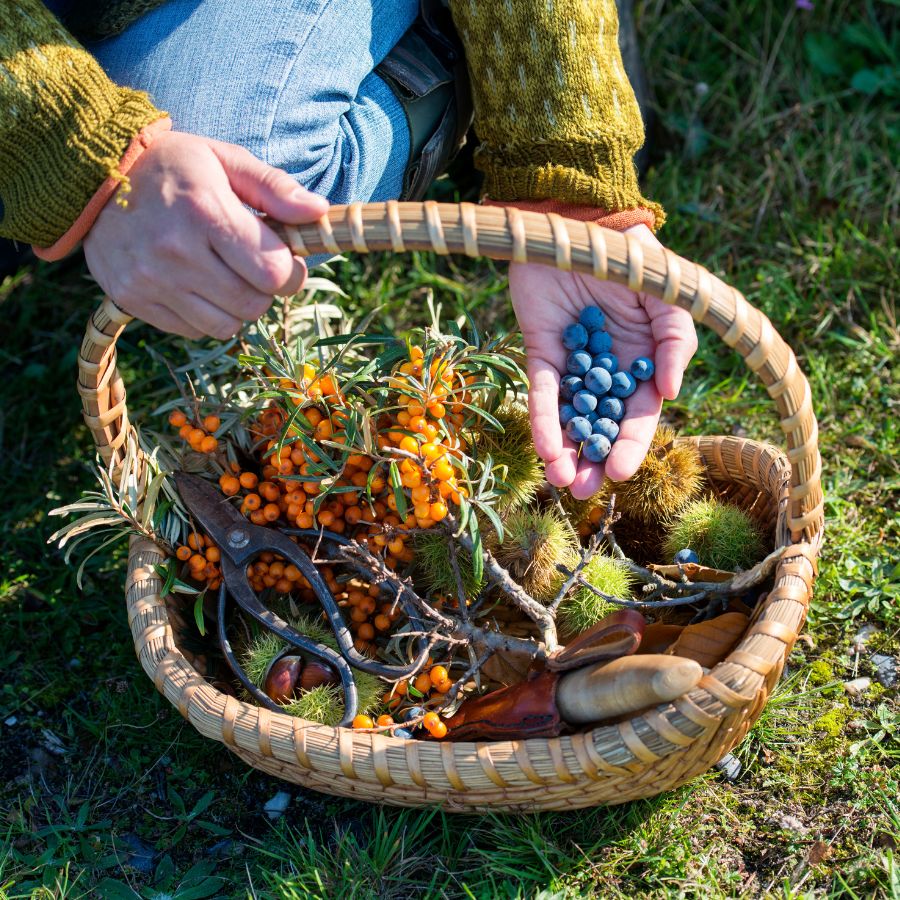
When you forage, take only what you plan to use. Overharvesting can hurt local plant populations and reduce future growth in that area.
Leaving plenty behind helps plants reproduce and supports wildlife that depends on them. It also ensures other foragers have a chance to enjoy the same resources.
Protect Yourself and Your Finds with Proper Foraging Gear

Having the right tools makes foraging easier and safer. Gloves protect your hands from irritants like stinging nettle, and a good knife or scissors lets you harvest cleanly without damaging the plant.
Use a basket or breathable bag to carry what you collect. Plastic bags hold too much moisture and can cause your greens to spoil before you get home.
This forager’s toolkit covers the essentials for any level of experience.
Watch for Allergic Reactions When Trying New Wild Foods

Even if a wild plant is safe to eat, your body might react to it in unexpected ways. It’s best to try a small amount first and wait to see how you feel.
Be extra careful with kids or anyone who has allergies. A plant that’s harmless for one person could cause a reaction in someone else.
Check Local Rules Before Foraging on Any Land
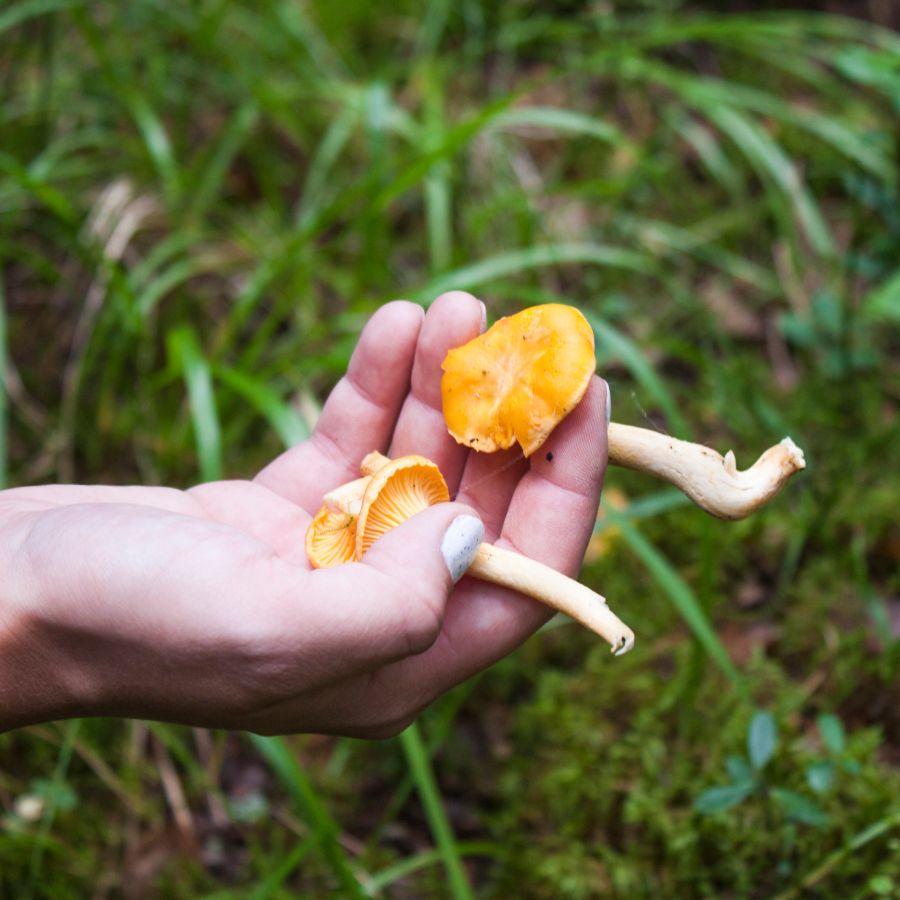
Before you start foraging, make sure you know the rules for the area you’re in. What’s allowed in one spot might be completely off-limits just a few miles away.
Some public lands permit limited foraging, while others, like national parks, usually don’t allow it at all. If you’re on private property, always get permission first.
Before you head out
Before embarking on any foraging activities, it is essential to understand and follow local laws and guidelines. Always confirm that you have permission to access any land and obtain permission from landowners if you are foraging on private property. Trespassing or foraging without permission is illegal and disrespectful.
For public lands, familiarize yourself with the foraging regulations, as some areas may restrict or prohibit the collection of mushrooms or other wild foods. These regulations and laws are frequently changing so always verify them before heading out to hunt. What we have listed below may be out of date and inaccurate as a result.
Where to Find Forageables in the State
There is a range of foraging spots where edible plants grow naturally and often in abundance:
| Plant | Locations |
| American Hazelnut (Corylus americana) | – Devil’s Lake State Park – Chiwaukee Prairie State Natural Area – Kettle Moraine State Forest |
| Black Raspberry (Rubus occidentalis) | – Pendarvis Historic Site, Mineral Point – Driftless Area woodlands – Dane County Parks |
| Black Walnut (Juglans nigra) | – Devil’s Lake State Park – Madison area woodlands – Southwest Wisconsin forests |
| Burdock (Arctium minus) | – Roadsides near Madison – Stream banks in Dane County – Old fields in Sauk County |
| Chickweed (Stellaria media) | – Rotary Botanical Gardens, Janesville – Gardens in Dane County – Woodlands near La Crosse |
| Dandelion (Taraxacum officinale) | – Stevens Pond, Madison – Prairie du Chien parks – Green Bay open fields |
| Milkweed (Asclepias syriaca) | – McCarthy Park, Cottage Grove – GDS School Prairie, Cottage Grove – Roadsides in Dane County |
| Curly Dock (Rumex crispus) | – Gardens in Burnett County – Fields along Highway 12 – Stream beds near Eau Claire |
| Elderberry (Sambucus canadensis) | – Kettle Moraine State Forest – Perrot State Park – Horicon Marsh Wildlife Area |
| Common Evening Primrose (Oenothera biennis) | – Governor Dodge State Park – New Glarus Woods State Park – Blue Mound State Park |
| Gooseberry (Ribes hirtellum) | – Chequamegon-Nicolet National Forest – Copper Falls State Park – Peninsula State Park |
| Groundnut (Apios americana) | – Brule River State Forest – Meadow Valley Wildlife Area – Black River State Forest |
| Jerusalem Artichoke (Helianthus tuberosus) | – Alliant Energy Center grounds, Madison – Edge of Lake Mendota – Prairie areas in Dane County |
| Lamb’s Quarters (Chenopodium album) | – Urban gardens in Milwaukee – Community gardens in Madison – Fields near Green Bay |
| Mayapple (Podophyllum peltatum) | – Governor Nelson State Park – Wyalusing State Park – Hartman Creek State Park |
| Nannyberry (Viburnum lentago) | – Interstate State Park – Willow River State Park – Wildcat Mountain State Park |
| Peppergrass (Lepidium virginicum) | – Roadsides in Racine County – Fields near Janesville – Open areas in Kenosha County |
| Red Clover (Trifolium pratense) | – Meadows in Jefferson County – Prairies near Oshkosh – Fields in Fond du Lac County |
| Red Currant (Ribes rubrum) | – Bayfield County forests – Ashland County woodlands – Douglas County natural areas |
| Red Raspberry (Rubus idaeus) | – Northern Highland-American Legion State Forest – Turtle-Flambeau Flowage – Vilas County trails |
| Sheep Sorrel (Rumex acetosella) | – Sandy soils in Adams County – Fields near Portage – Open areas in Marquette County |
| Shepherd’s Purse (Capsella bursa-pastoris) | – Urban areas in Madison – Gardens in Eau Claire – Fields near Stevens Point |
| Staghorn Sumac (Rhus typhina) | – Bluffs along Mississippi River – Roadsides in La Crosse County – Open areas in Vernon County |
| Stinging Nettle (Urtica dioica) | – Along Sugar River Trail – Banks of Rock River – Woodlands near Baraboo |
| Wild Bergamot (Monarda fistulosa) | – Prairie restorations in Dane County – Meadows near Prairie du Sac – Fields in Columbia County |
| Wild Grape (Vitis riparia) | – Along Wisconsin River – Edges of Lake Winnebago – Woodlands in Door County |
| Wild Leek / Ramp (Allium tricoccum) | – Chequamegon-Nicolet National Forest – Nicolet Bay, Peninsula State Park – Forest floors in Bayfield County |
| Wild Plum (Prunus americana) | – Sandhill Wildlife Area – Necedah National Wildlife Refuge – Fields near Wisconsin Rapids |
| Wood Sorrel (Oxalis stricta) | – Gardens in Madison – Woodlands near Eau Claire – Parks in Wausau |
| Yarrow (Achillea millefolium) | – Prairies in Monroe County – Fields near Sparta – Roadsides in Trempealeau County |
Peak Foraging Seasons
Different edible plants grow at different times of year, depending on the season and weather. Timing your search makes all the difference.
Spring
Spring brings a fresh wave of wild edible plants as the ground thaws and new growth begins:
| Plant | Months | Best Weather Conditions |
| Chickweed (Stellaria media) | March – May | Cool, damp conditions in shaded areas |
| Dandelion (Taraxacum officinale) | April – June | Mild temperatures with regular rainfall |
| Curly Dock (Rumex crispus) | April – May | Moist soil after spring rains |
| Mayapple (Podophyllum peltatum) | April – May | Cool forest floors with light shade |
| Stinging Nettle (Urtica dioica) | April – June | Moist woodland edges or streambanks |
| Sheep Sorrel (Rumex acetosella) | April – May | Sandy, well-drained soils after rain |
| Shepherd’s Purse (Capsella bursa-pastoris) | April – May | Cool, moist meadows or fields |
| Wild Leek / Ramp (Allium tricoccum) | April – May | Cool, shaded forest ground with rich soil |
| Wood Sorrel (Oxalis stricta) | April – May | Damp, semi-shaded areas after spring showers |
Summer
Summer is a peak season for foraging, with fruits, flowers, and greens growing in full force:
| Plant | Months | Best Weather Conditions |
| Black Raspberry (Rubus occidentalis) | June – July | Warm, sunny edges of woods and thickets |
| Elderberry (Sambucus canadensis) | July – August | Sunny, moist areas near ditches or wetlands |
| Milkweed (Asclepias syriaca) | June – August | Sunny fields or roadsides after rain |
| Burdock (Arctium minus) | June – August | Partial shade in disturbed soils with moderate moisture |
| Lamb’s Quarters (Chenopodium album) | June – August | Warm, sunny gardens or open fields |
| Gooseberry (Ribes hirtellum) | June – July | Shady forest margins with rich soil |
| Peppergrass (Lepidium virginicum) | June – August | Dry, open meadows with full sun |
| Red Clover (Trifolium pratense) | June – August | Sunny, grassy fields with occasional rain |
| Red Currant (Ribes rubrum) | July – August | Cool, moist forests or thickets |
| Red Raspberry (Rubus idaeus) | June – July | Moist, sunny slopes or forest edges |
| Staghorn Sumac (Rhus typhina) | July – August | Dry hillsides and forest clearings during warm spells |
| Wild Bergamot (Monarda fistulosa) | July – August | Dry prairies and open woods in hot sun |
| Wild Grape (Vitis riparia) | July – September | Sunny trellises, forest edges, or fences |
| Wild Plum (Prunus americana) | July – August | Sunny clearings or field edges after rainfall |
| Yarrow (Achillea millefolium) | June – August | Dry, sunny meadows and roadsides |
Fall
As temperatures drop, many edible plants shift underground or produce their last harvests:
| Plant | Months | Best Weather Conditions |
| American Hazelnut (Corylus americana) | September – October | Dry, crisp days in sunny forest edges |
| Black Walnut (Juglans nigra) | September – October | Cool, dry woodlands or floodplains |
| Groundnut (Apios americana) | September – November | Moist lowlands or streambanks during cool weather |
| Jerusalem Artichoke (Helianthus tuberosus) | September – November | Cool, sunny areas with loose soil |
| Nannyberry (Viburnum lentago) | September – October | Moist thickets and forest margins in early fall |
| Common Evening Primrose (Oenothera biennis) | September – October | Dry fields or roadsides during cooler evenings |
Winter
Winter foraging is limited but still possible, with hardy plants and preserved growth holding on through the cold:
| Plant | Months | Best Weather Conditions |
| Burdock (Arctium minus) – root | December – February | Frozen but diggable ground, low snow cover |
| Curly Dock (Rumex crispus) – root | December – February | Cold weather with soft ground in sunny patches |
| Jerusalem Artichoke (Helianthus tuberosus) – tuber | December – February | Ground not deeply frozen; after light snowmelt |
| Groundnut (Apios americana) – tuber | December – February | Moist soils along water margins, ground soft enough to dig |
| Dandelion (Taraxacum officinale) – root | December – February | Mild winter days when soil is loose enough to dig |
One Final Disclaimer
The information provided in this article is for general informational and educational purposes only. Foraging for wild plants and mushrooms involves inherent risks. Some wild plants and mushrooms are toxic and can be easily mistaken for edible varieties.
Before ingesting anything, it should be identified with 100% certainty as edible by someone qualified and experienced in mushroom and plant identification, such as a professional mycologist or an expert forager. Misidentification can lead to serious illness or death.
All mushrooms and plants have the potential to cause severe adverse reactions in certain individuals, even death. If you are consuming foraged items, it is crucial to cook them thoroughly and properly and only eat a small portion to test for personal tolerance. Some people may have allergies or sensitivities to specific mushrooms and plants, even if they are considered safe for others.
Foraged items should always be fully cooked with proper instructions to ensure they are safe to eat. Many wild mushrooms and plants contain toxins and compounds that can be harmful if ingested.

